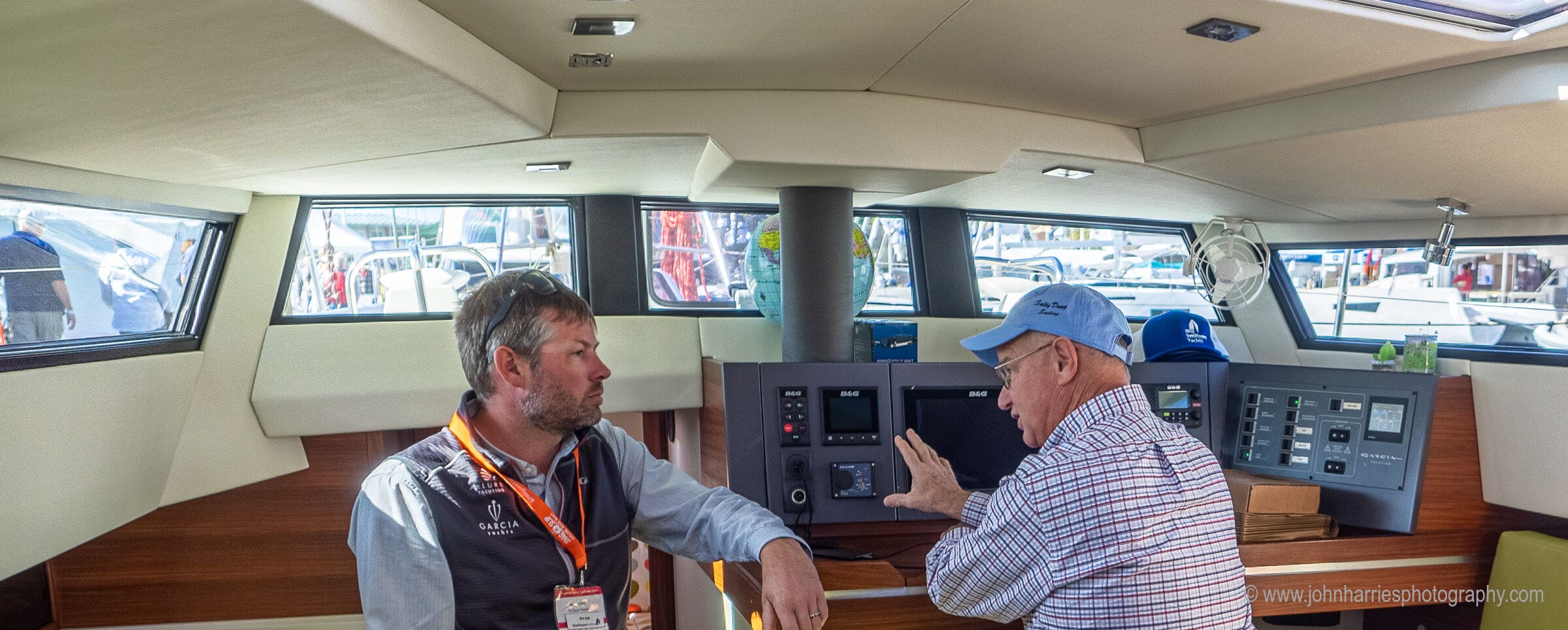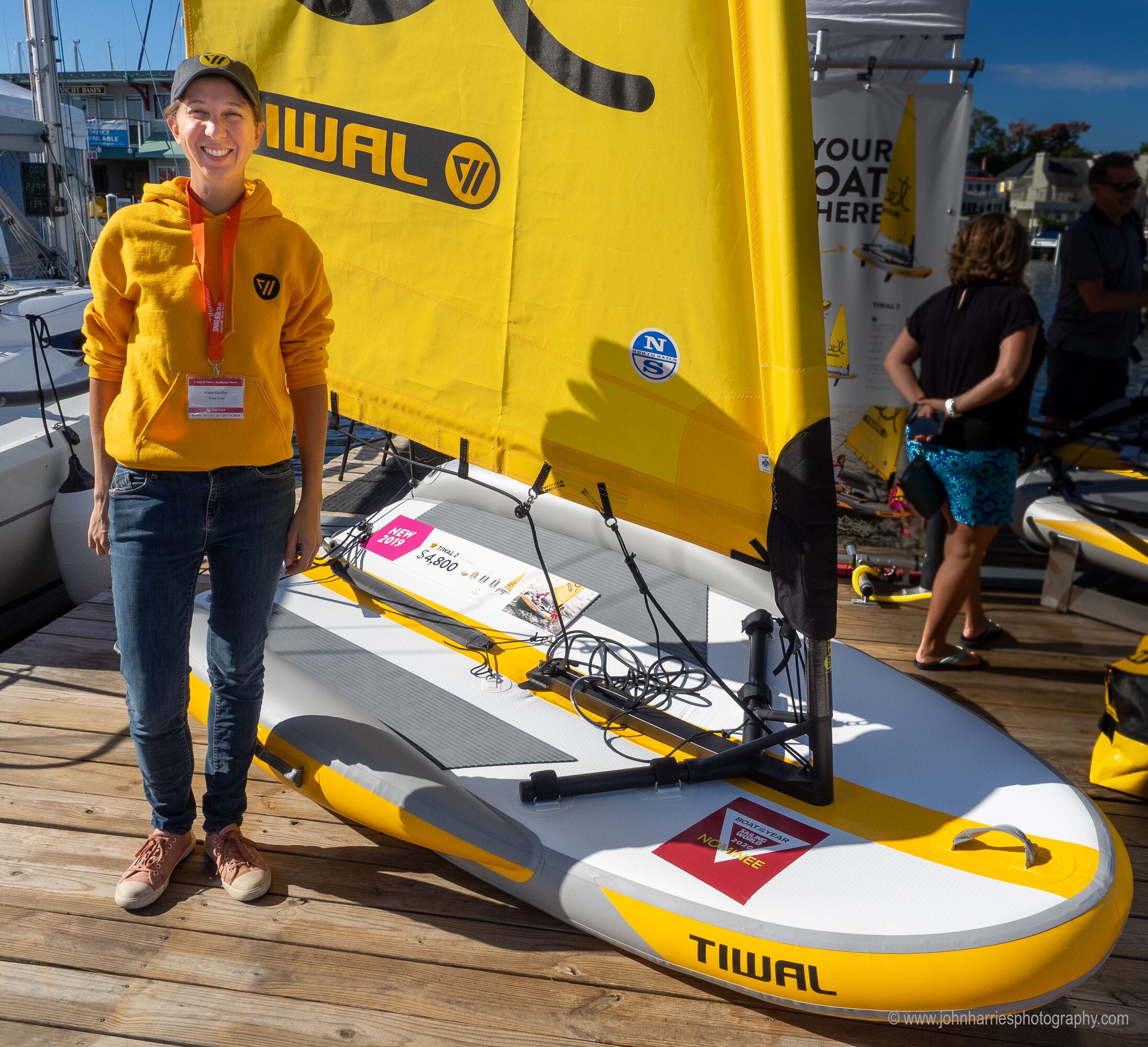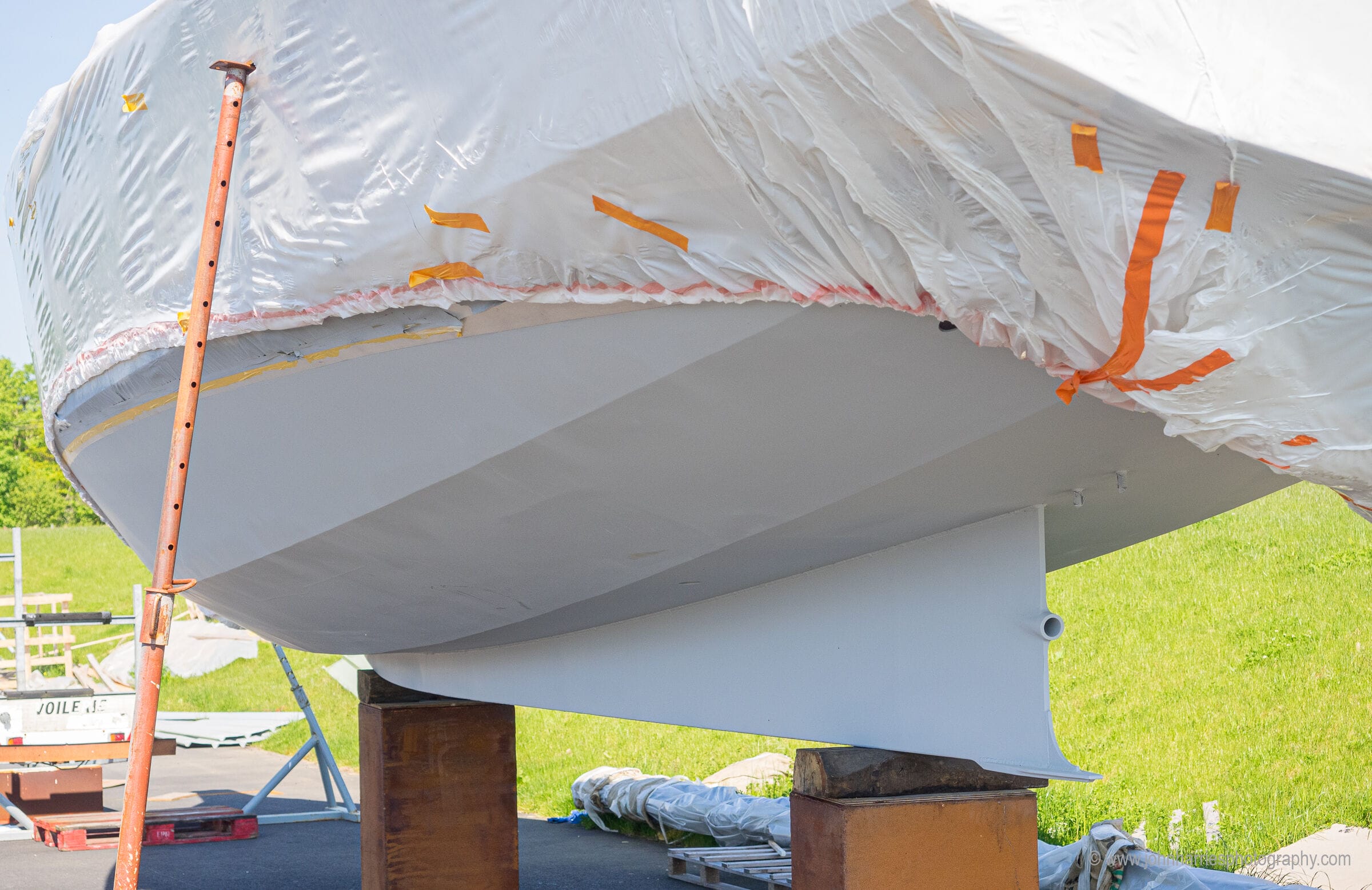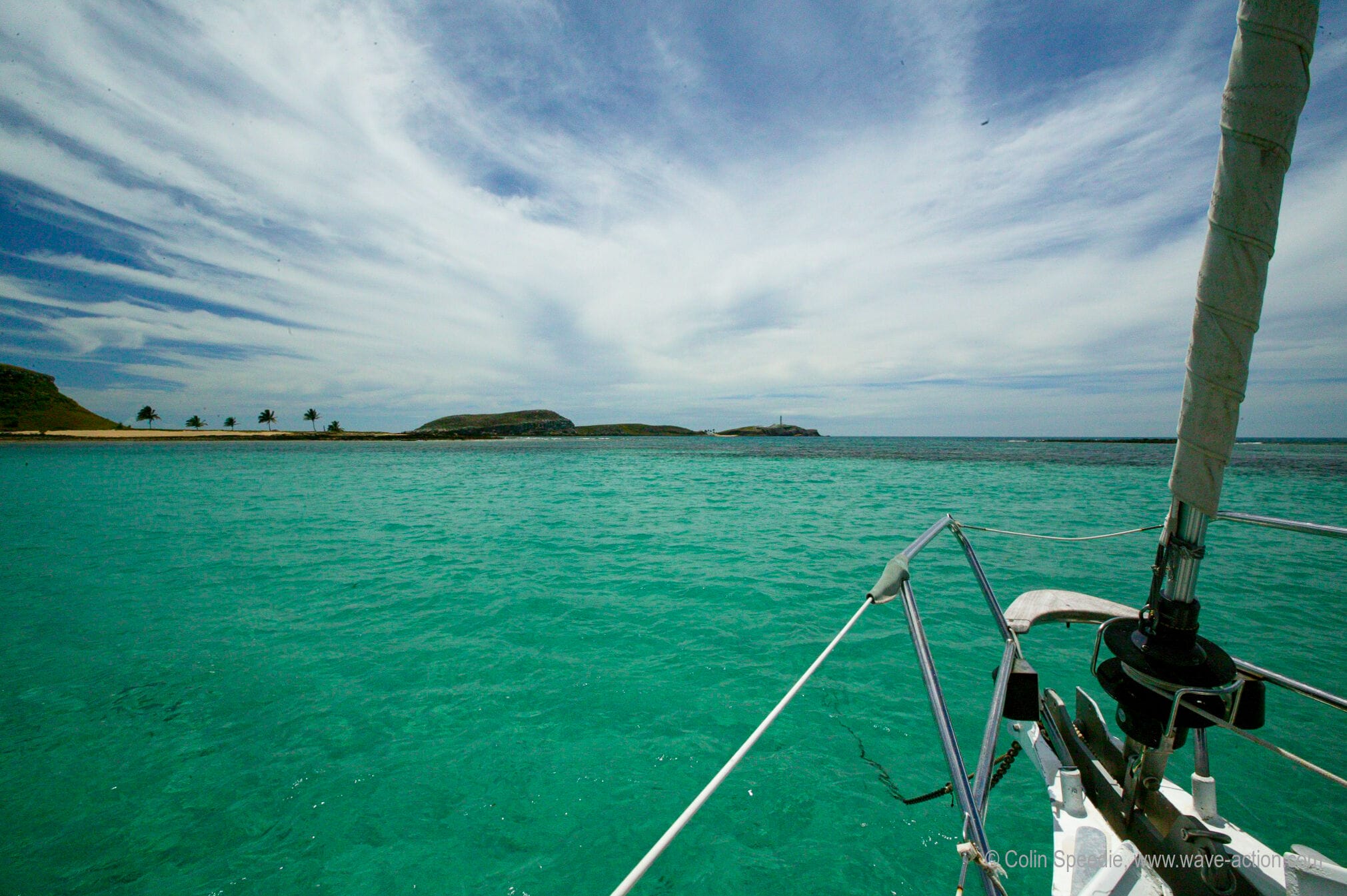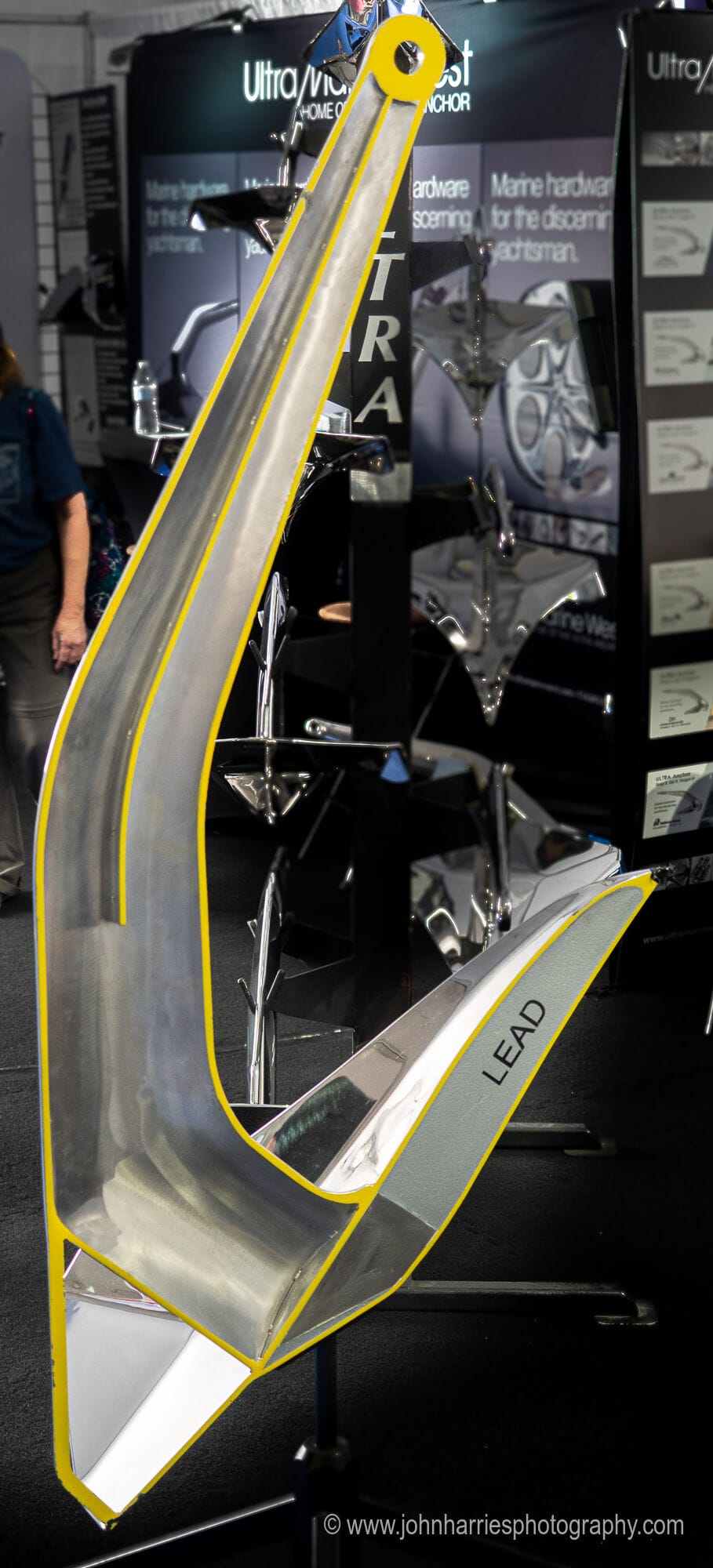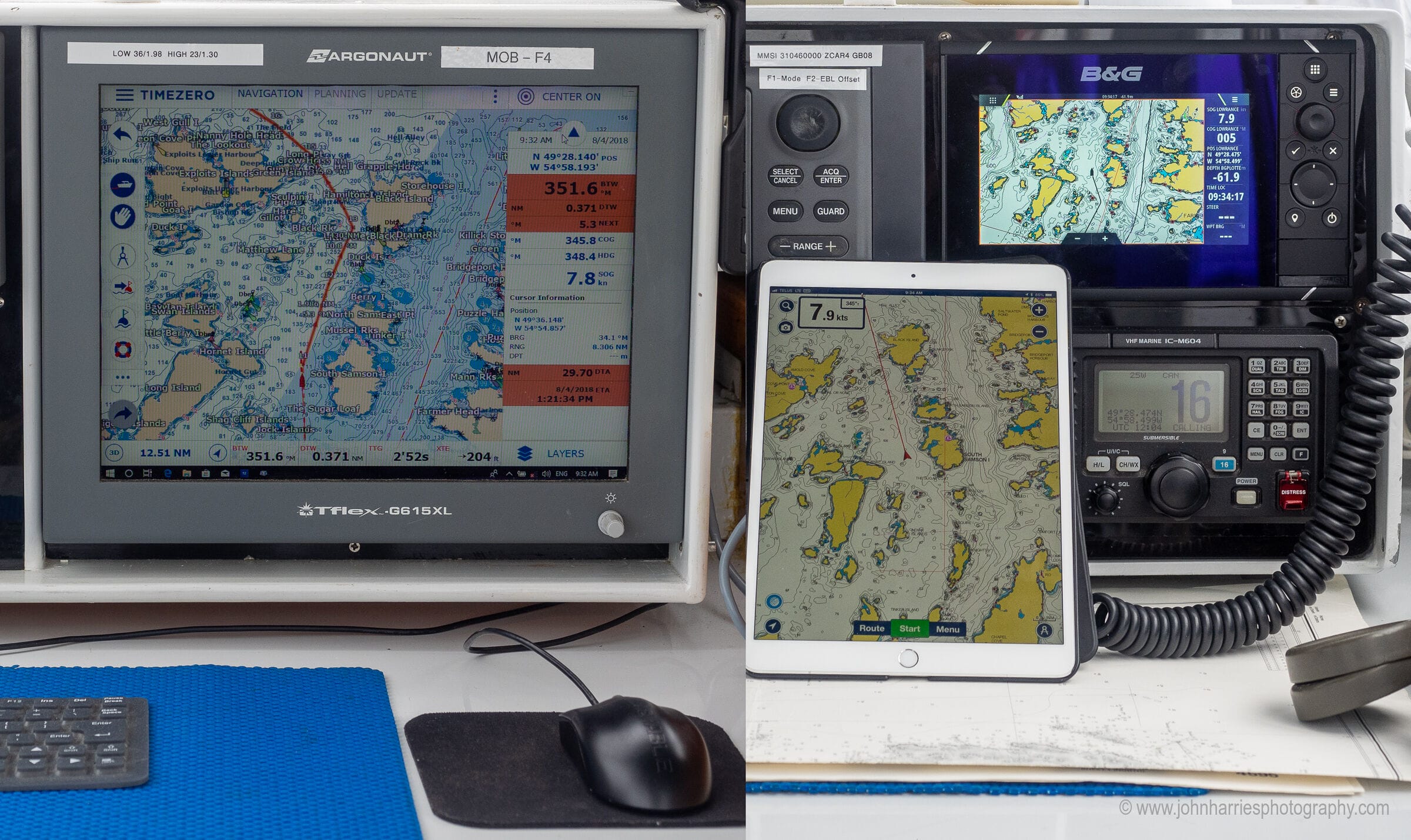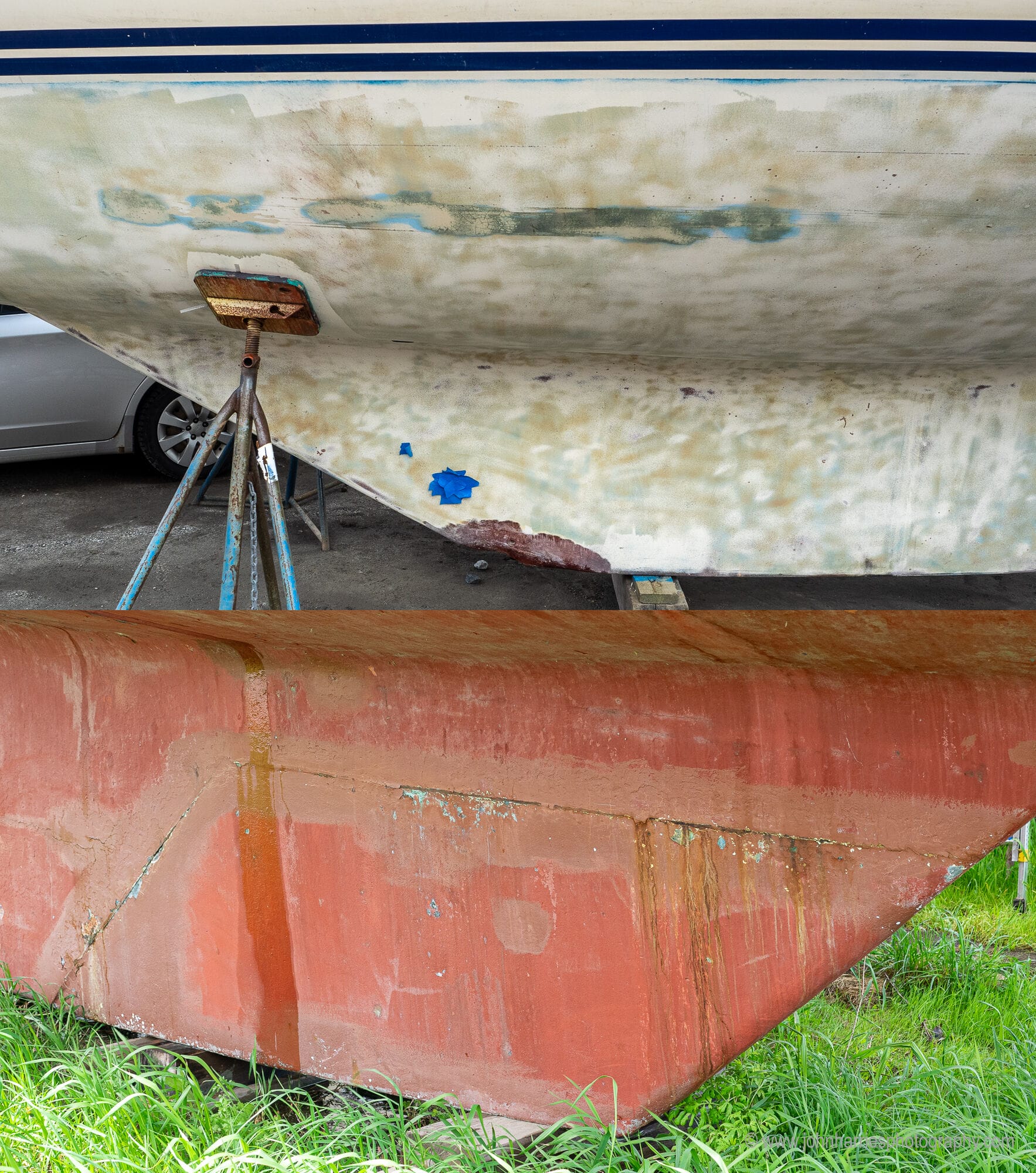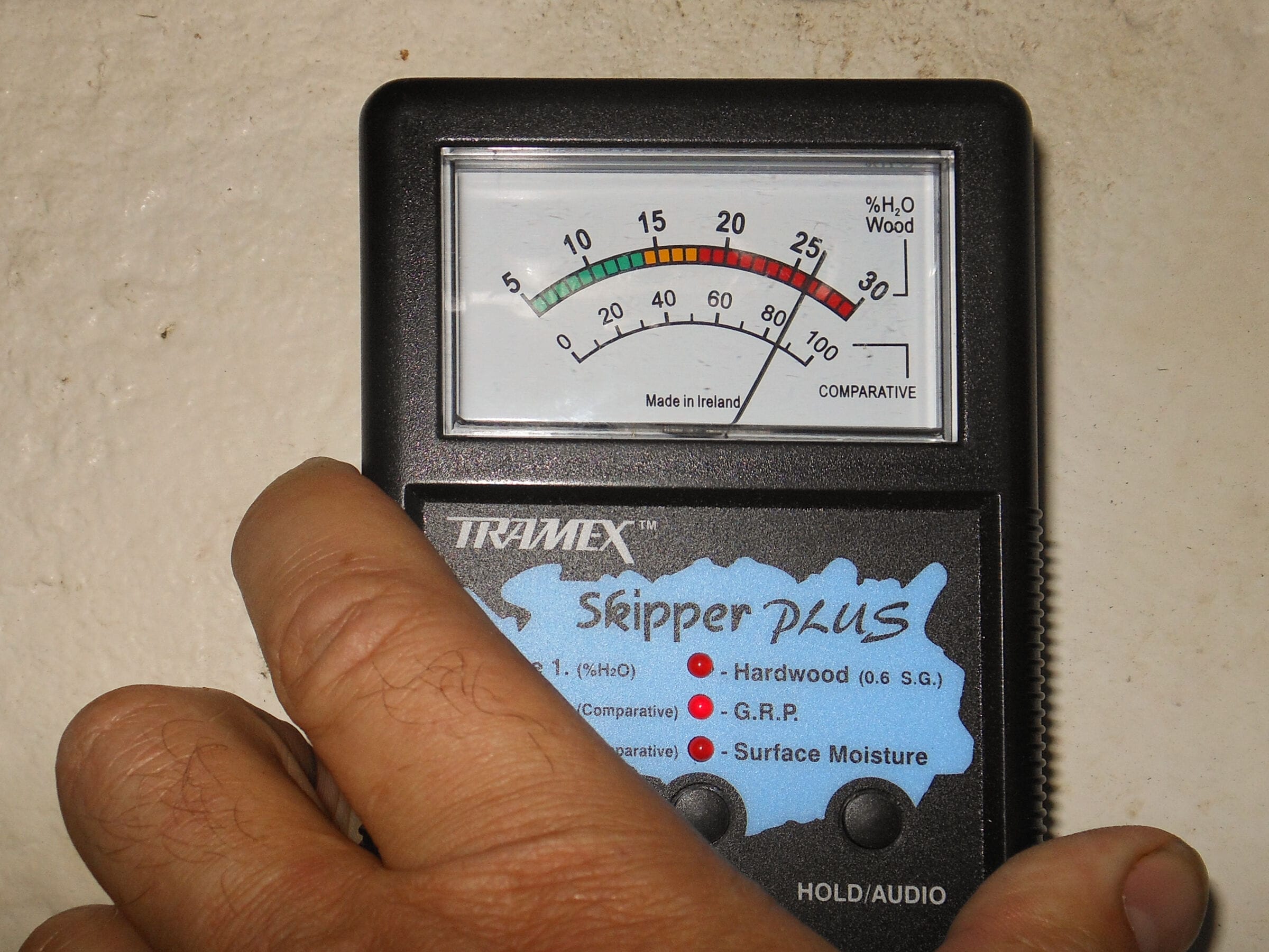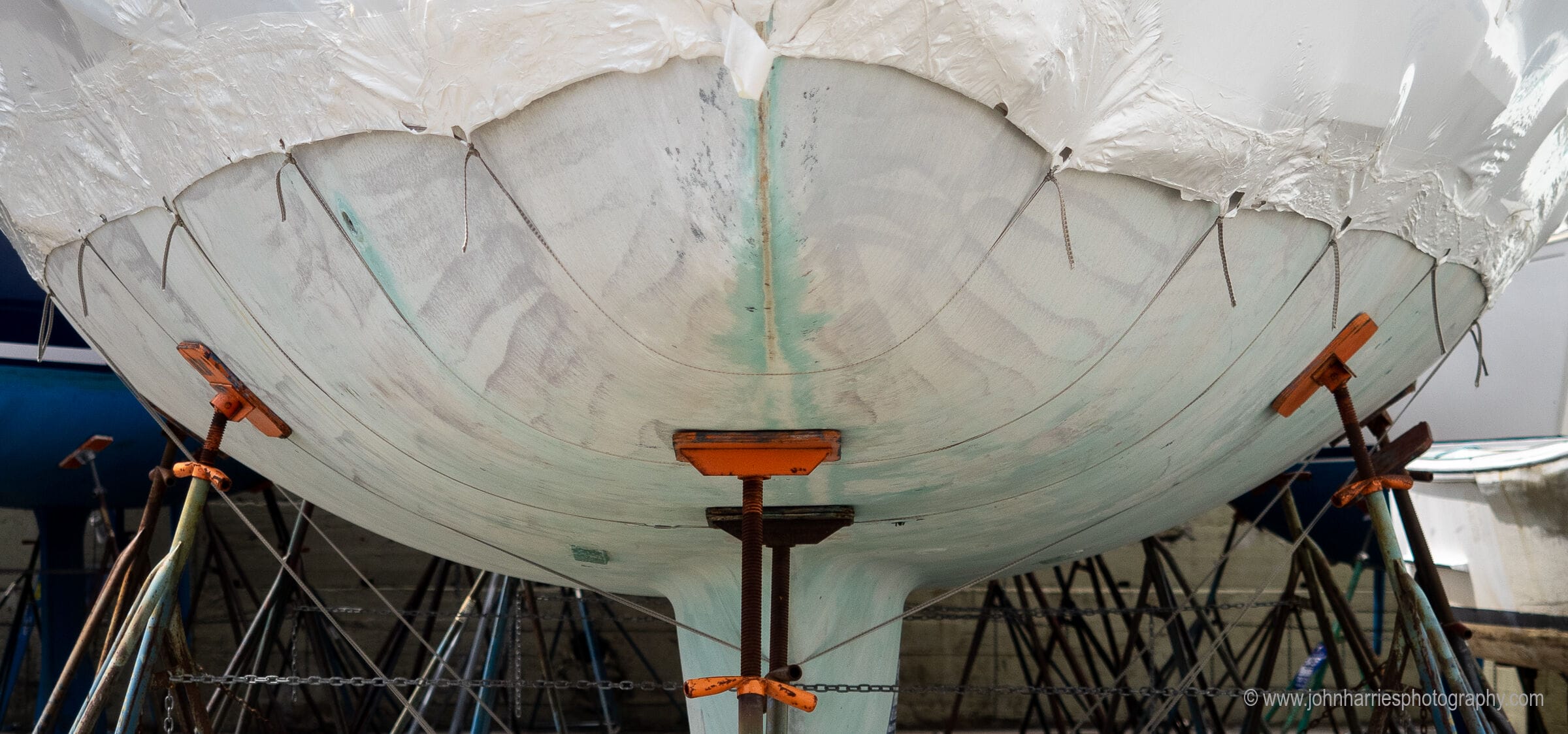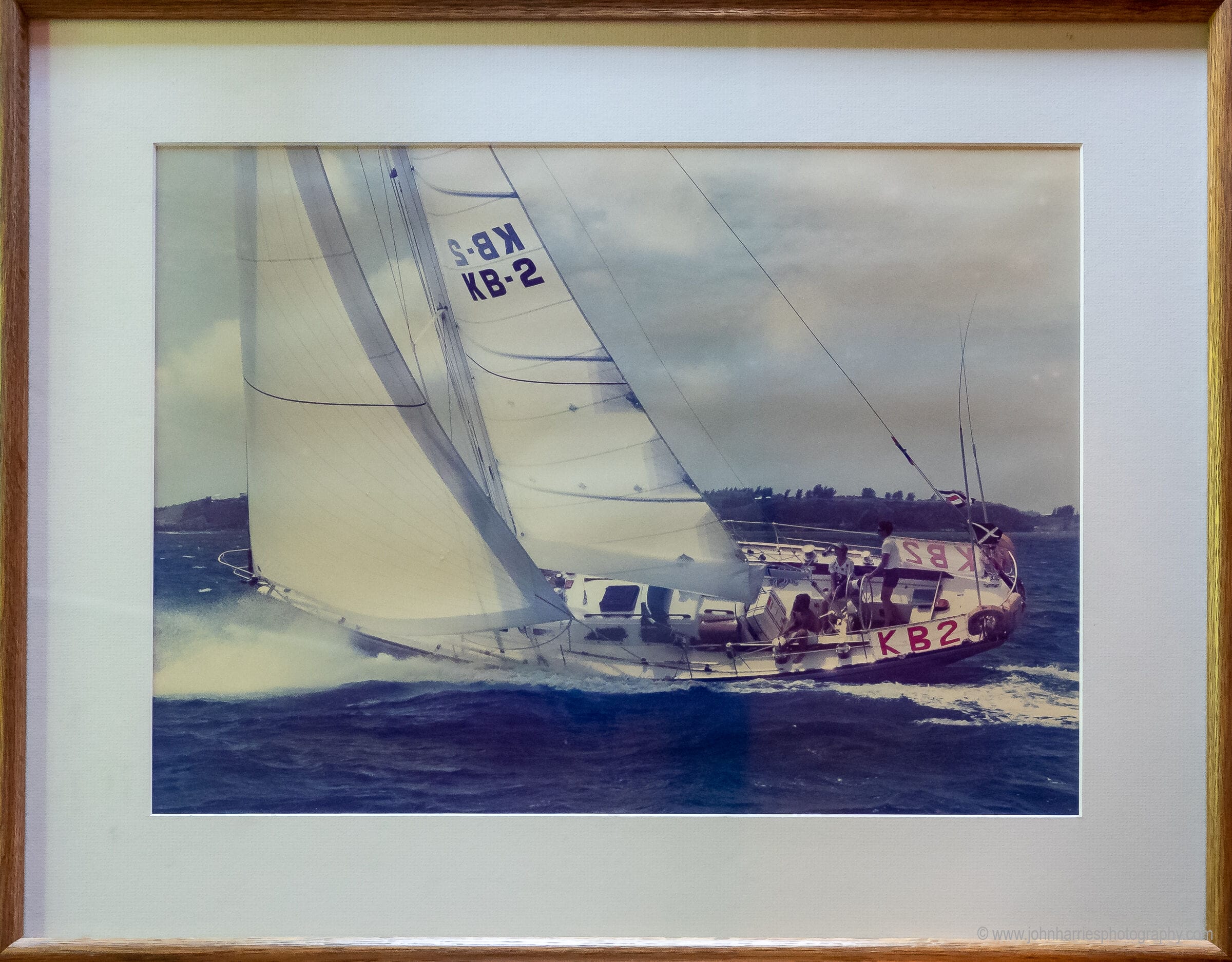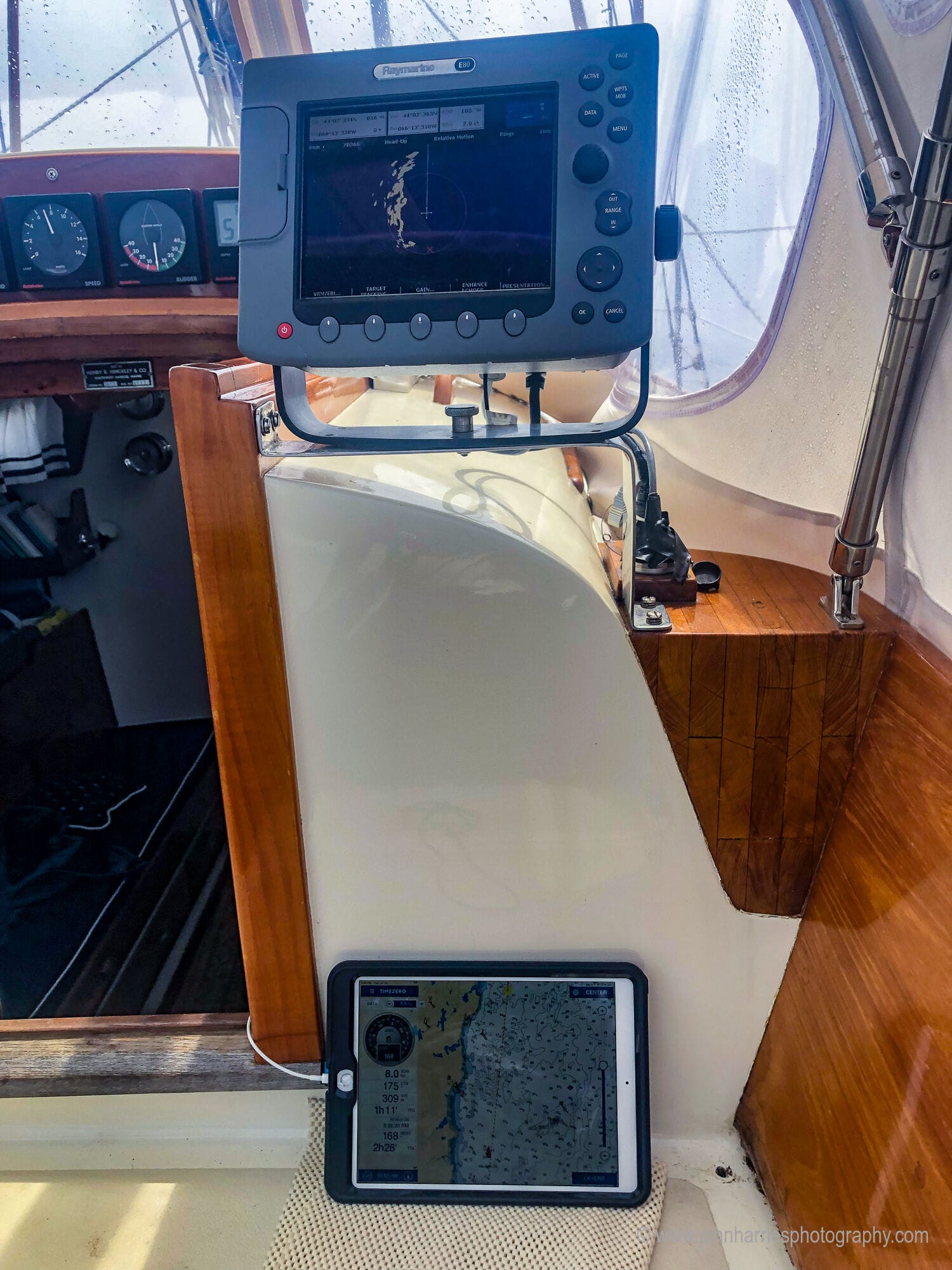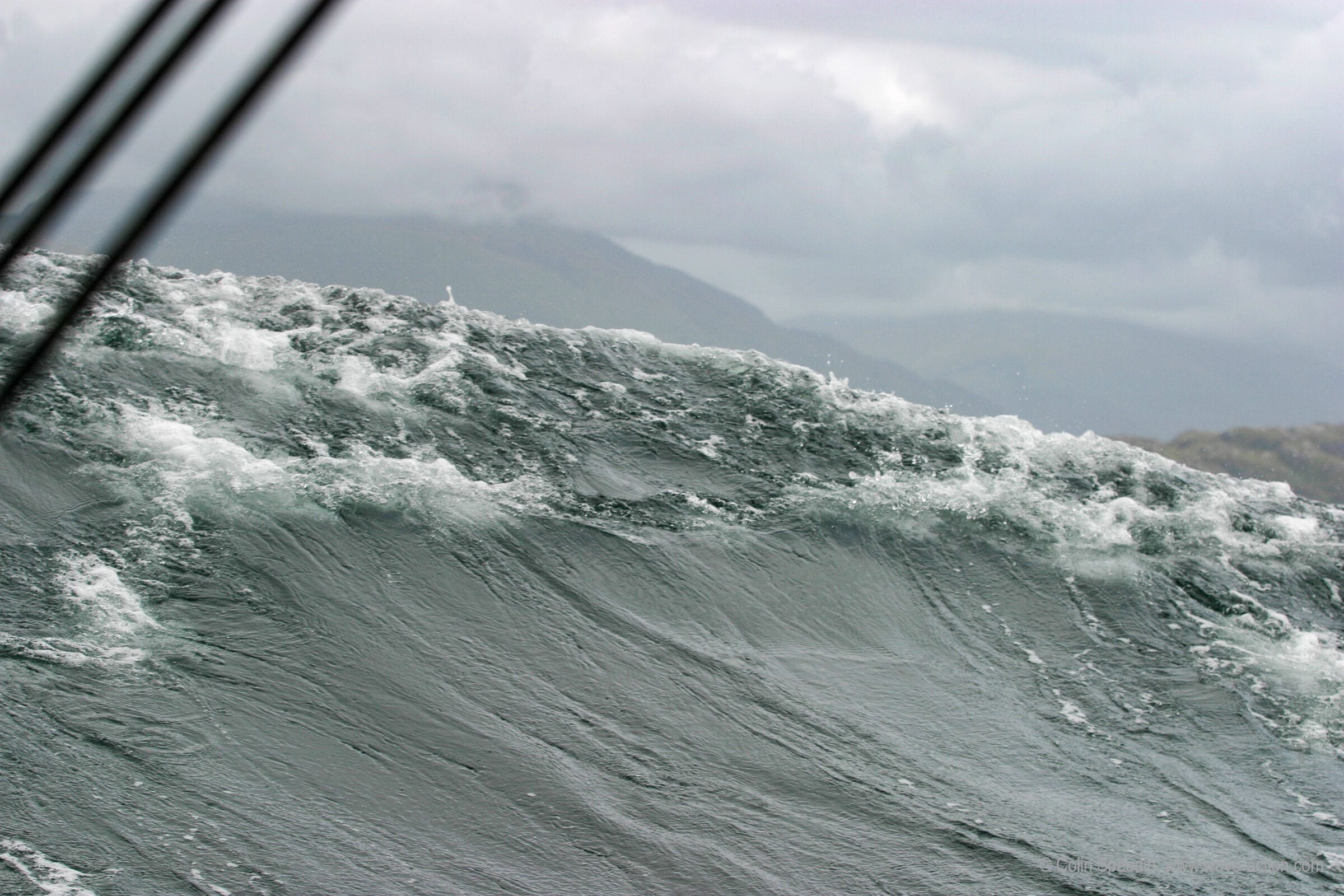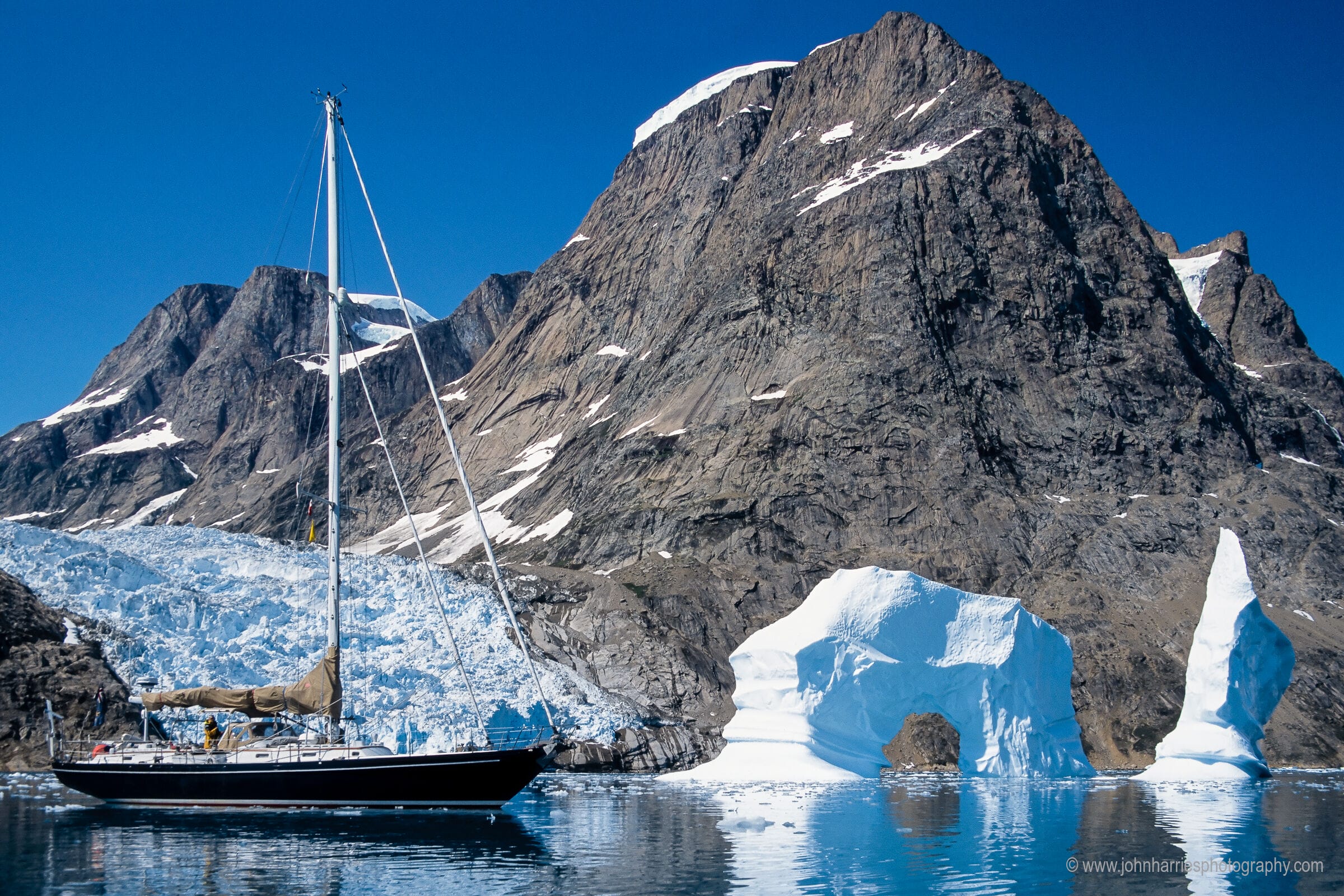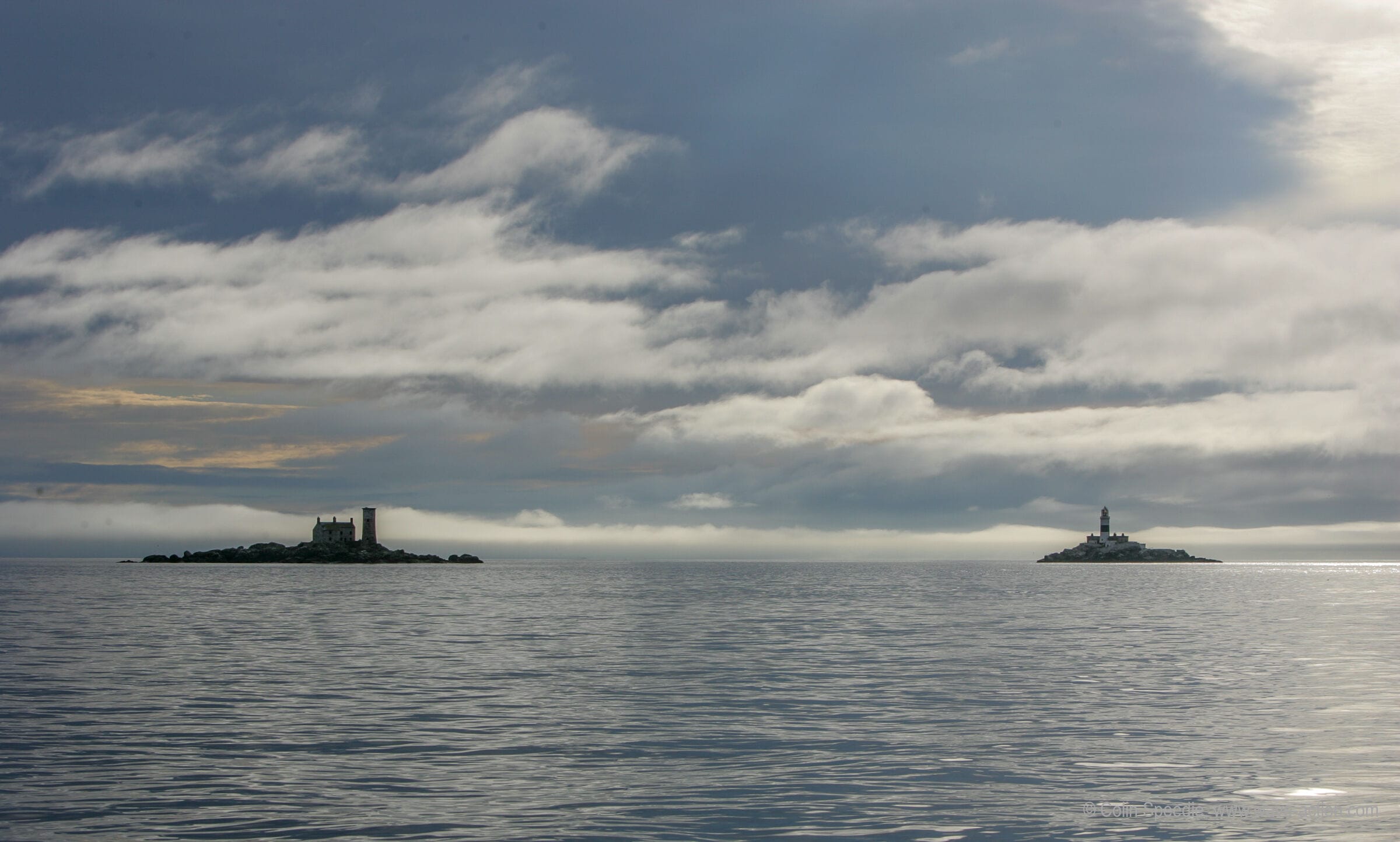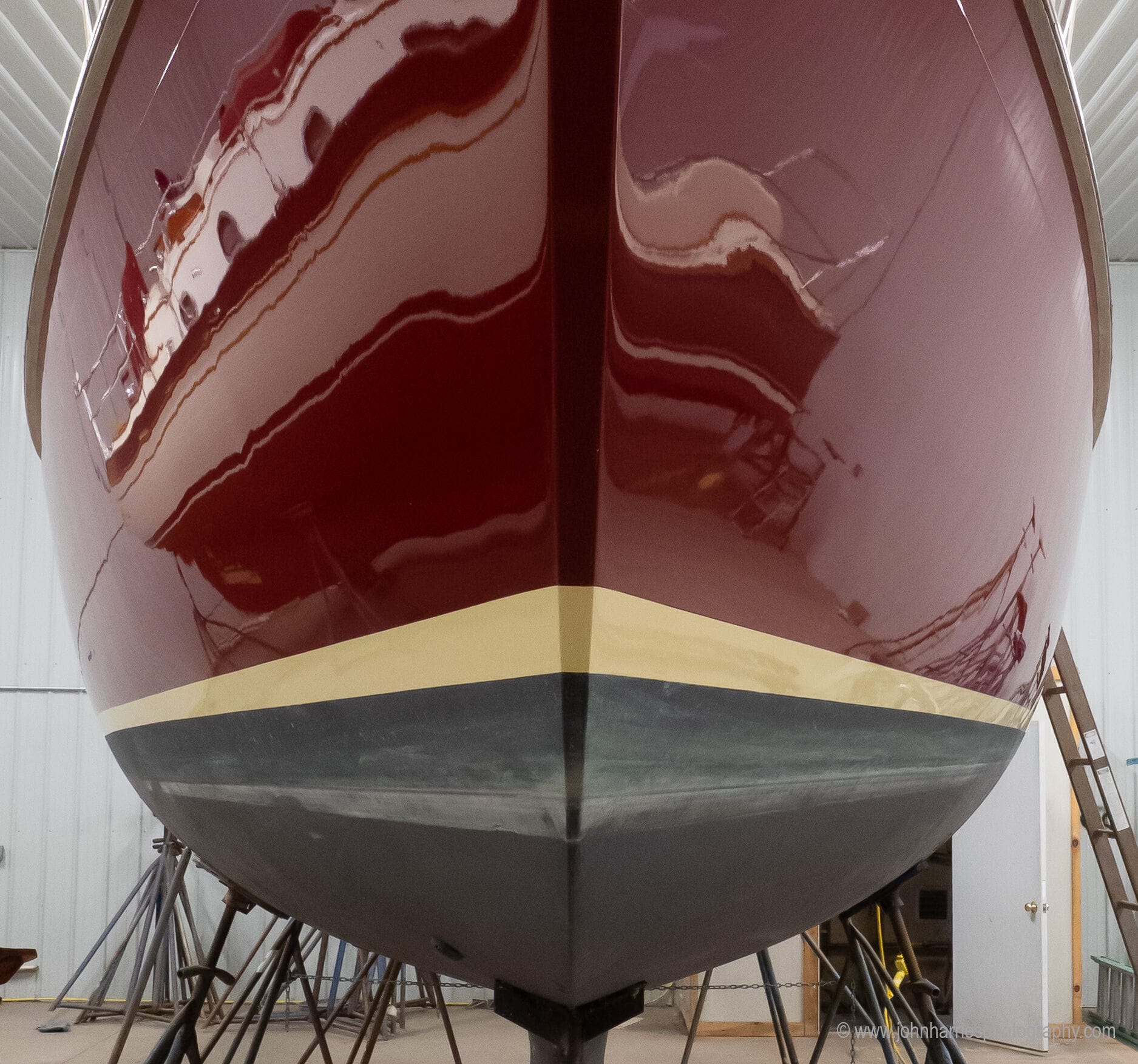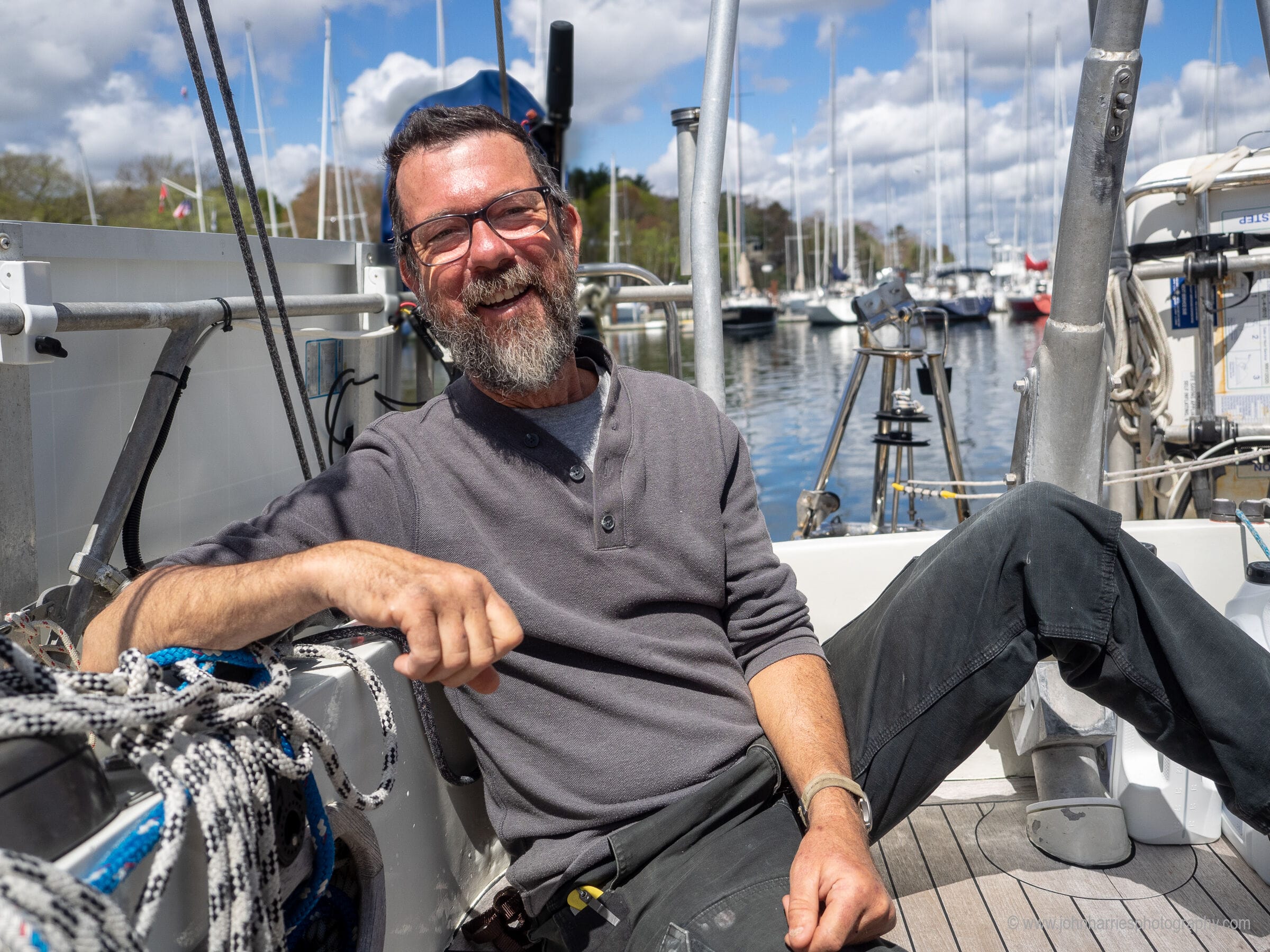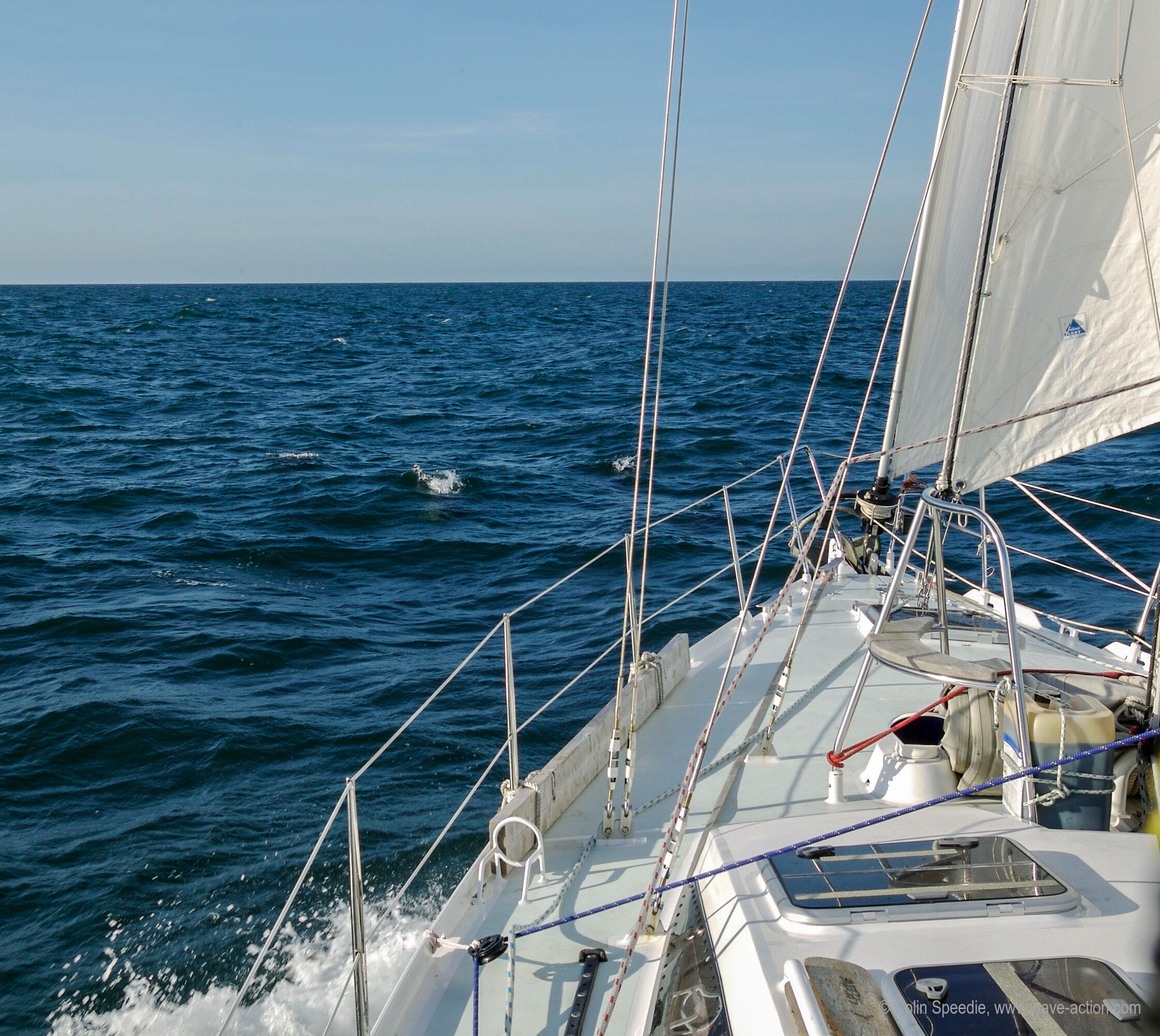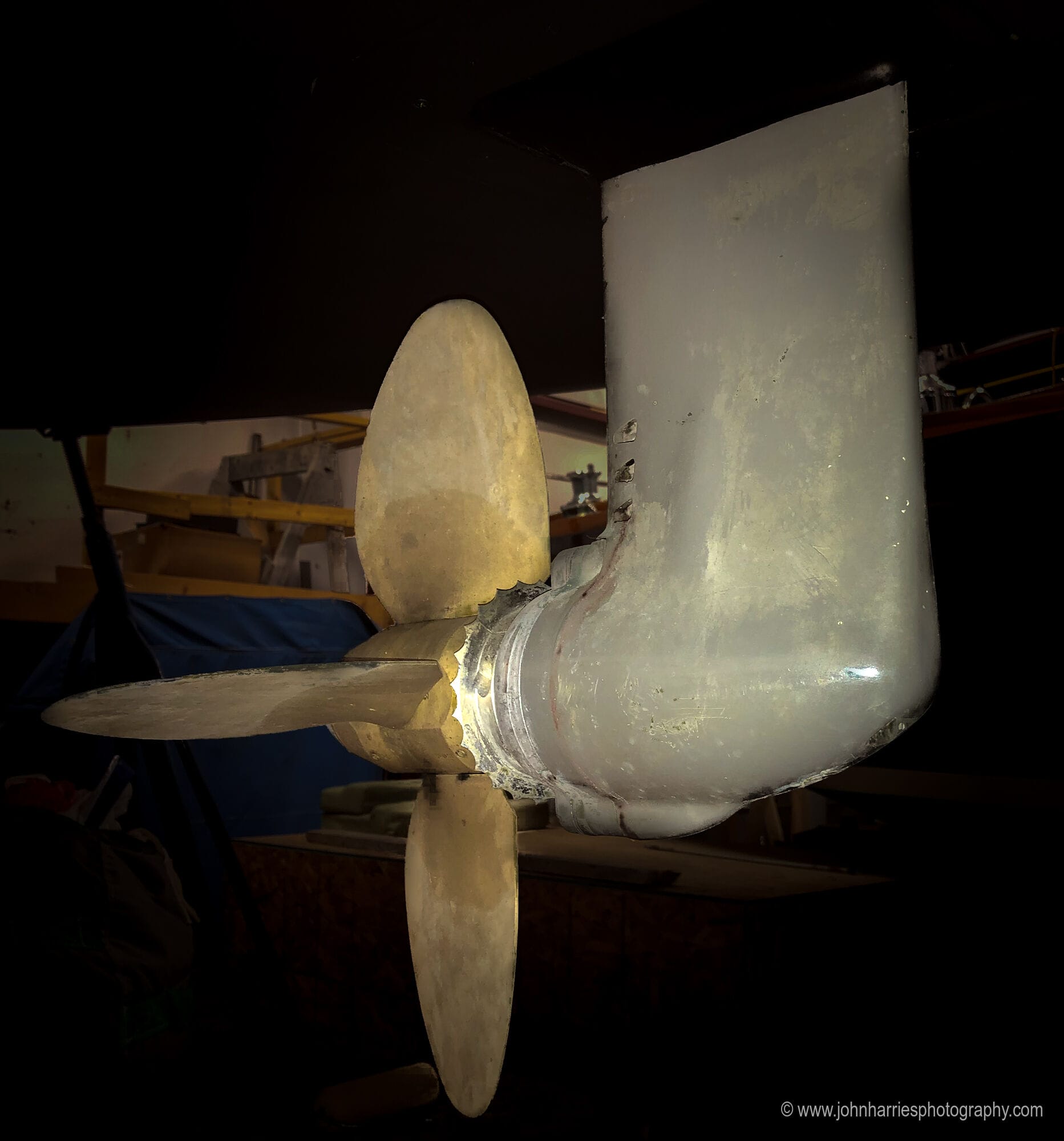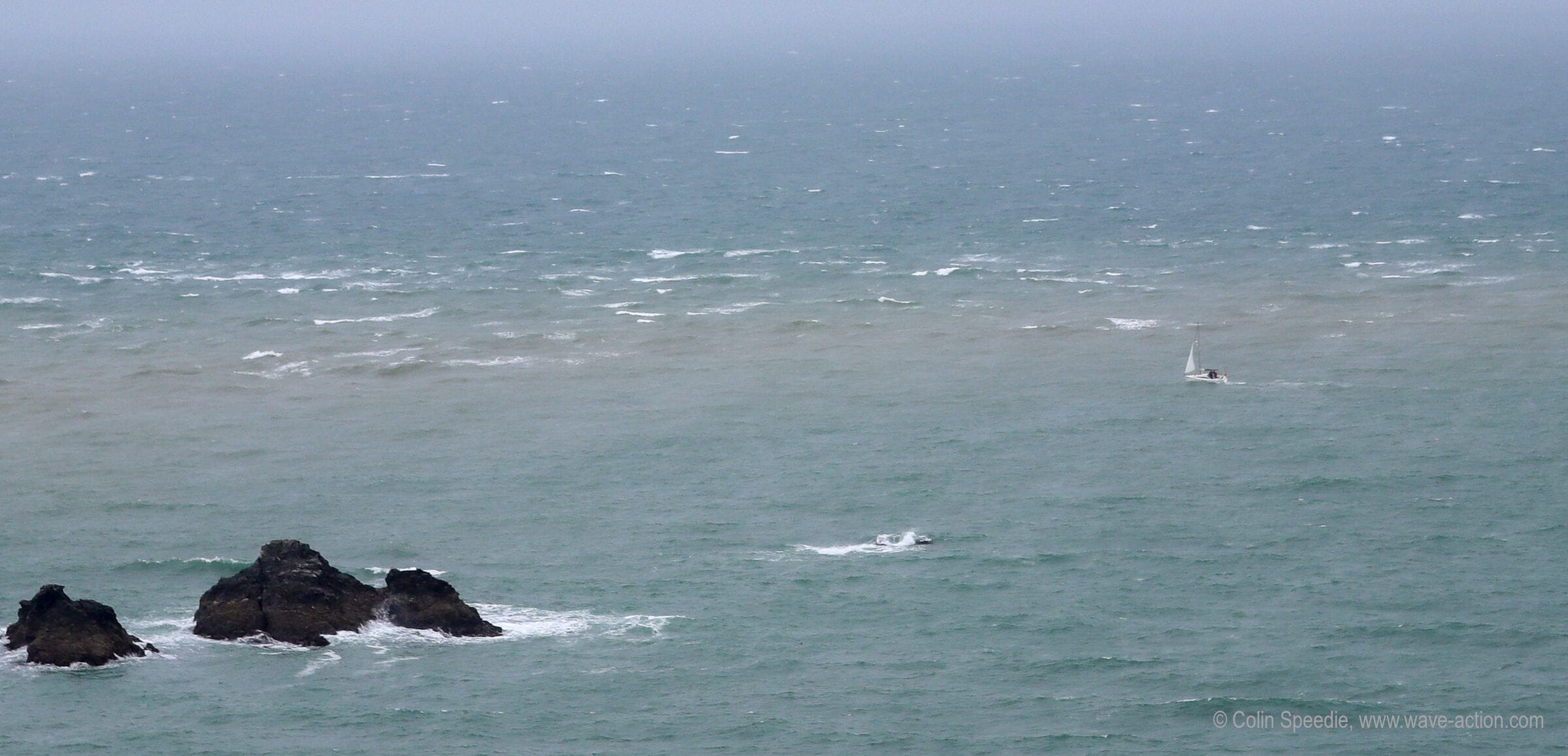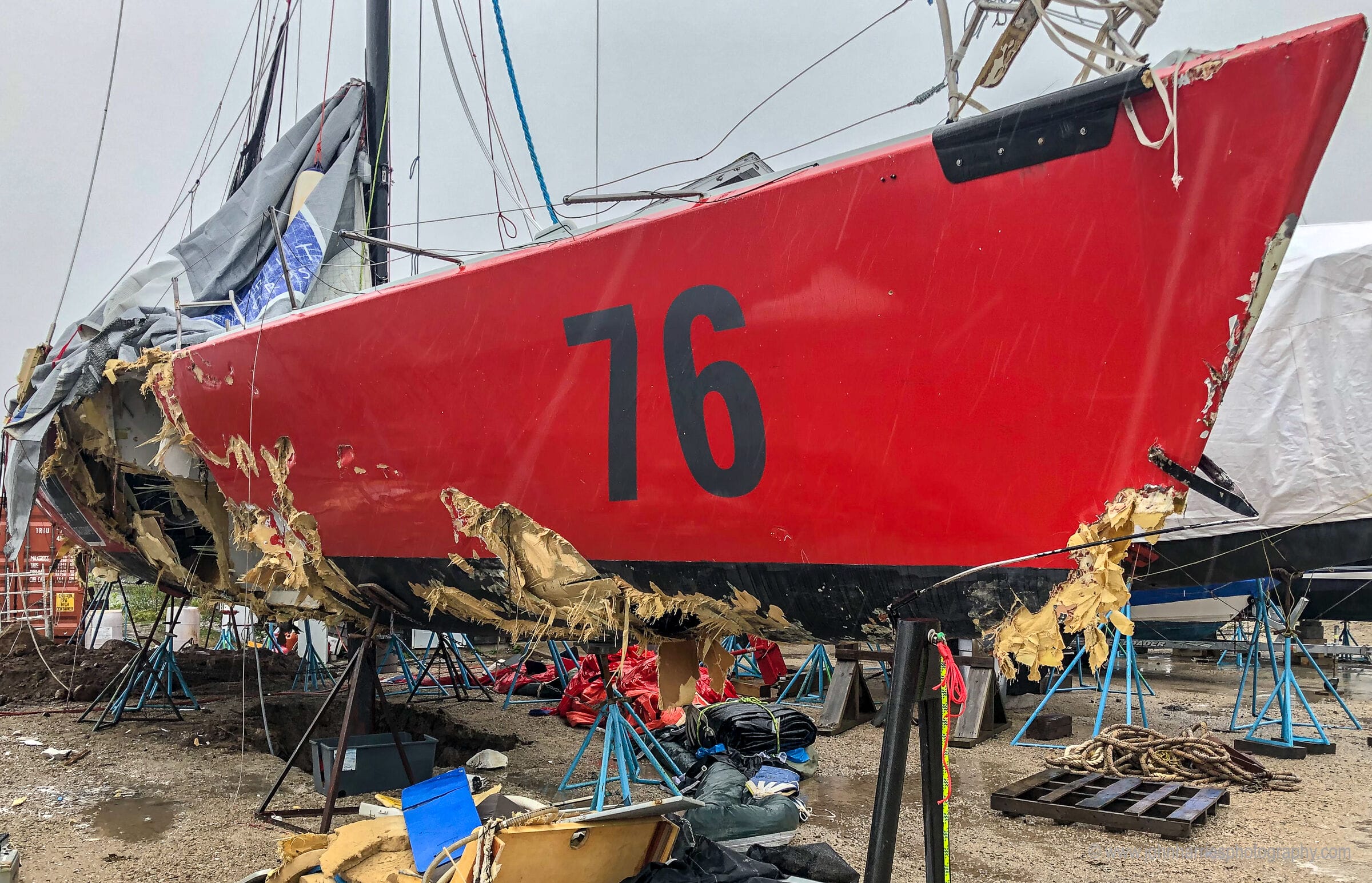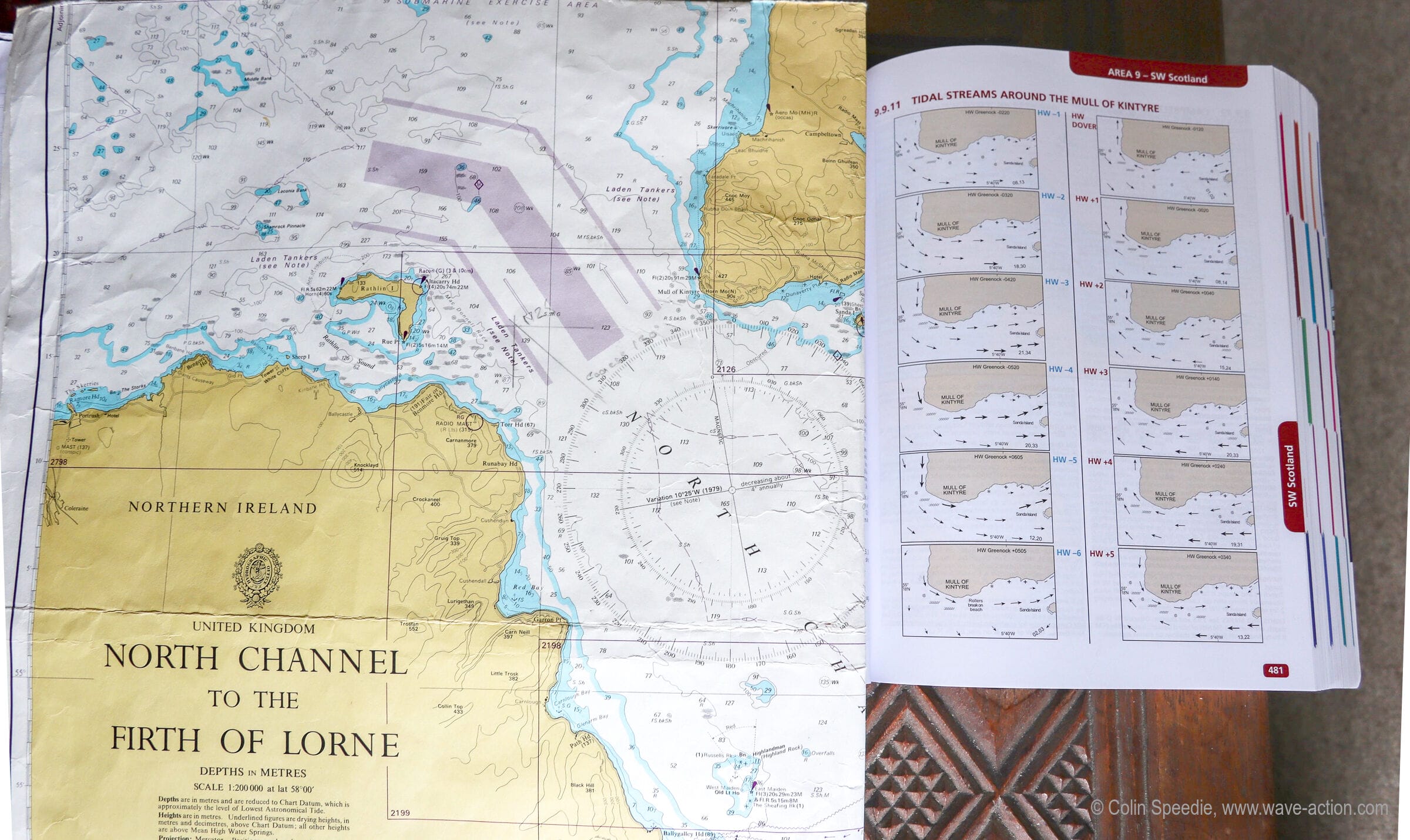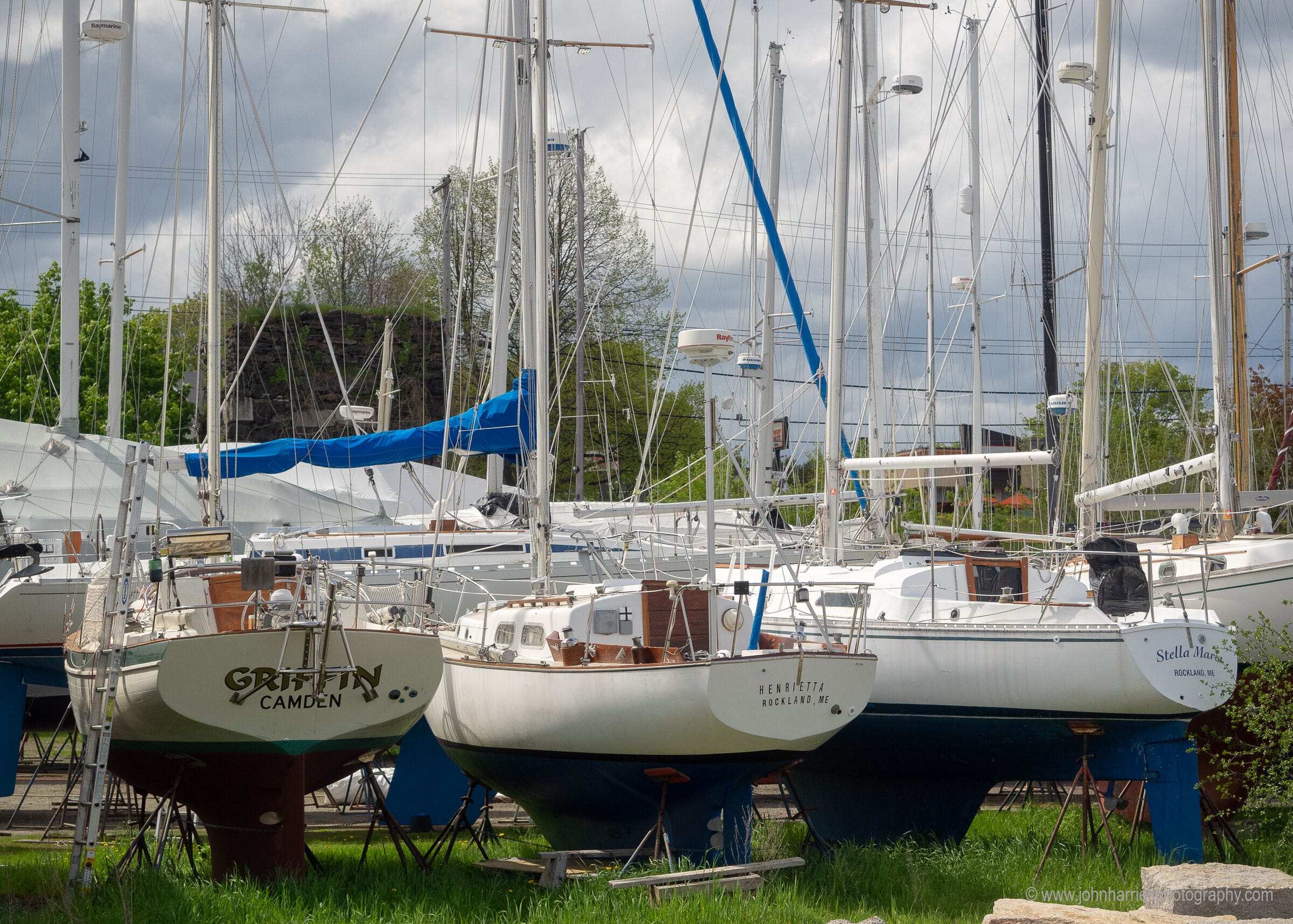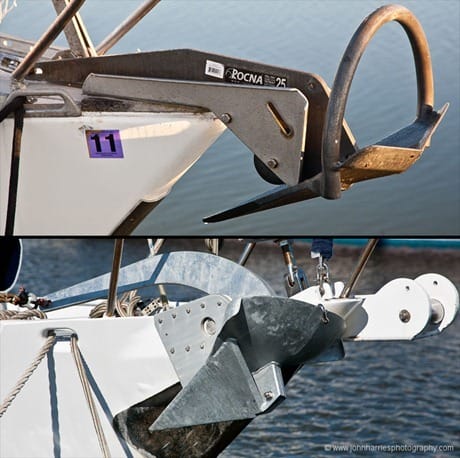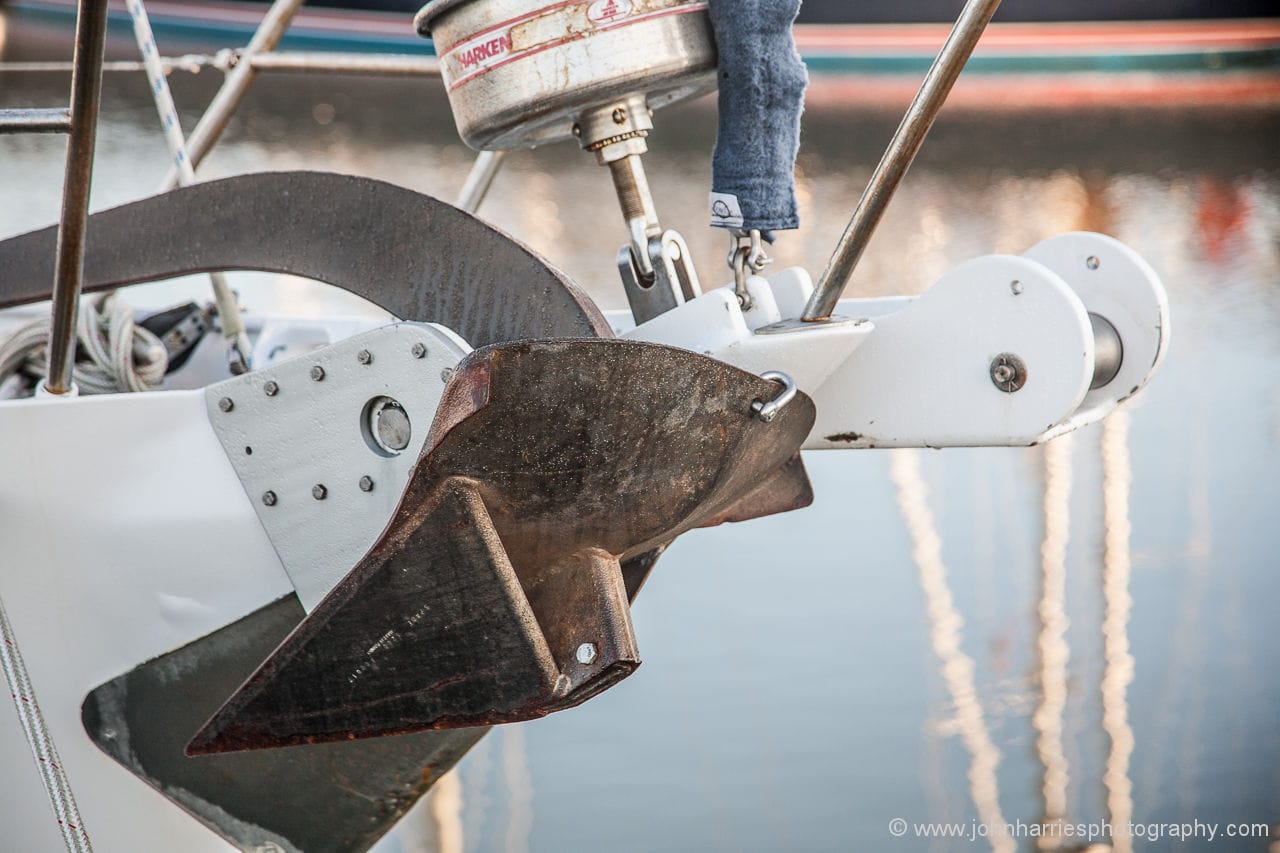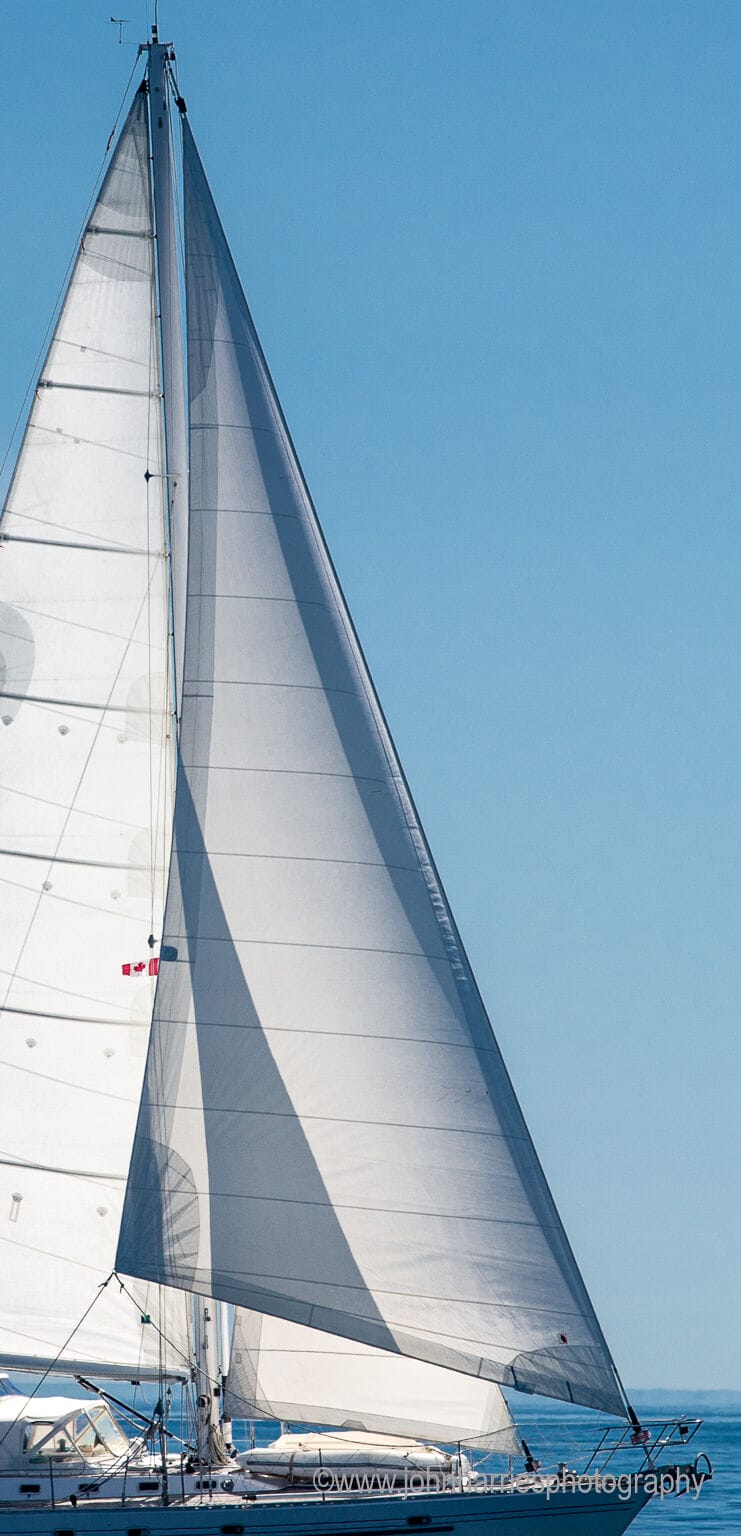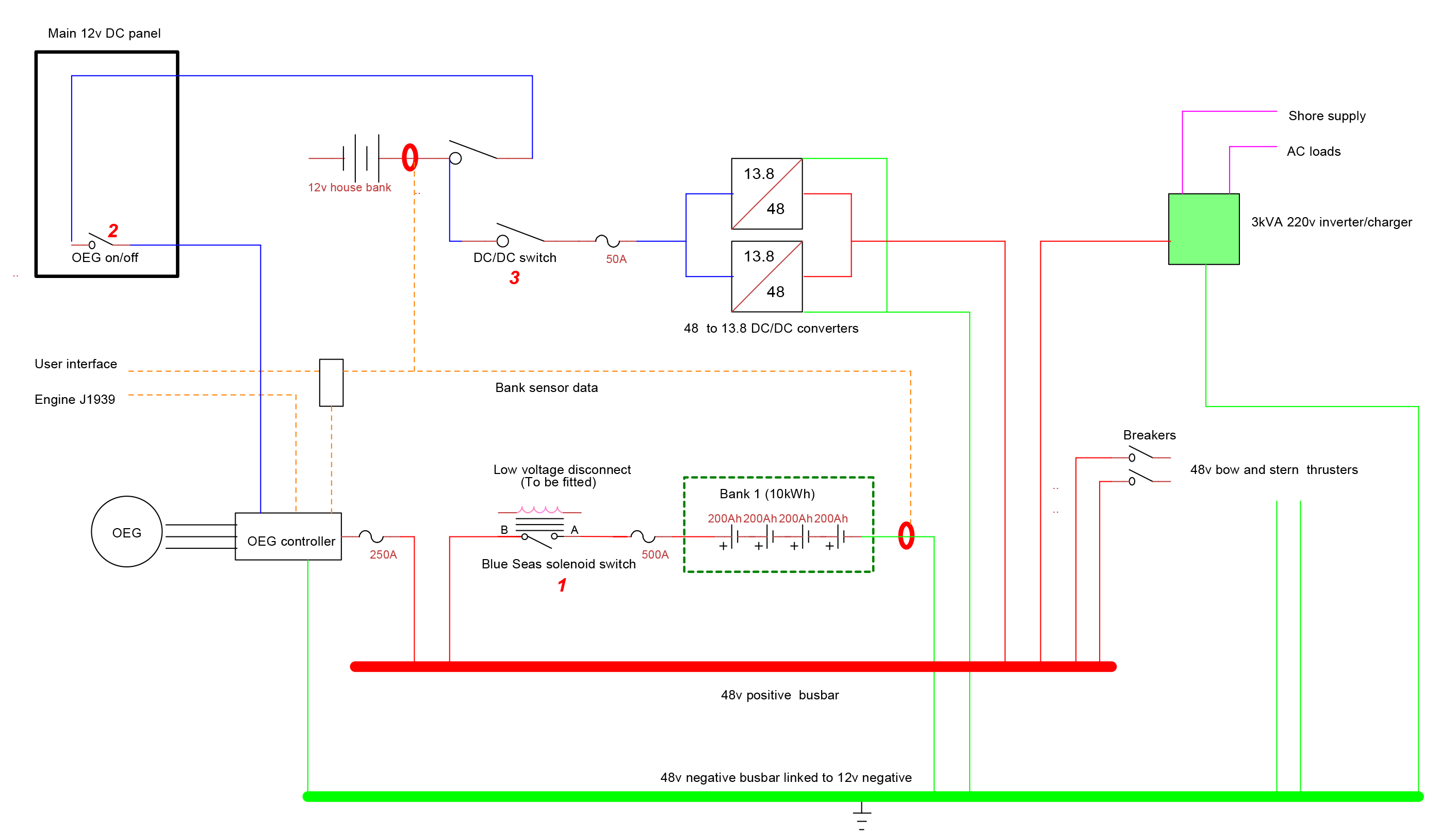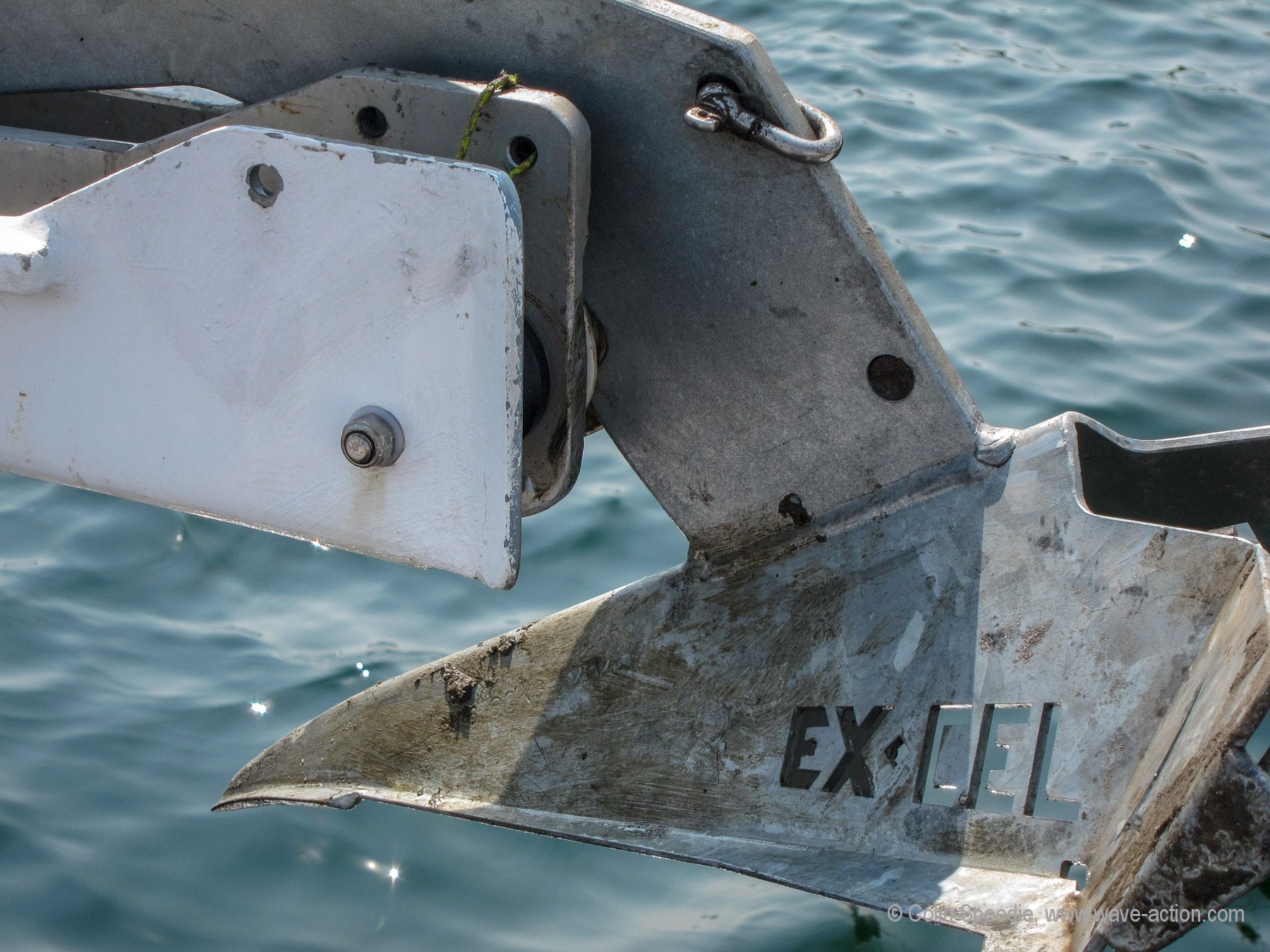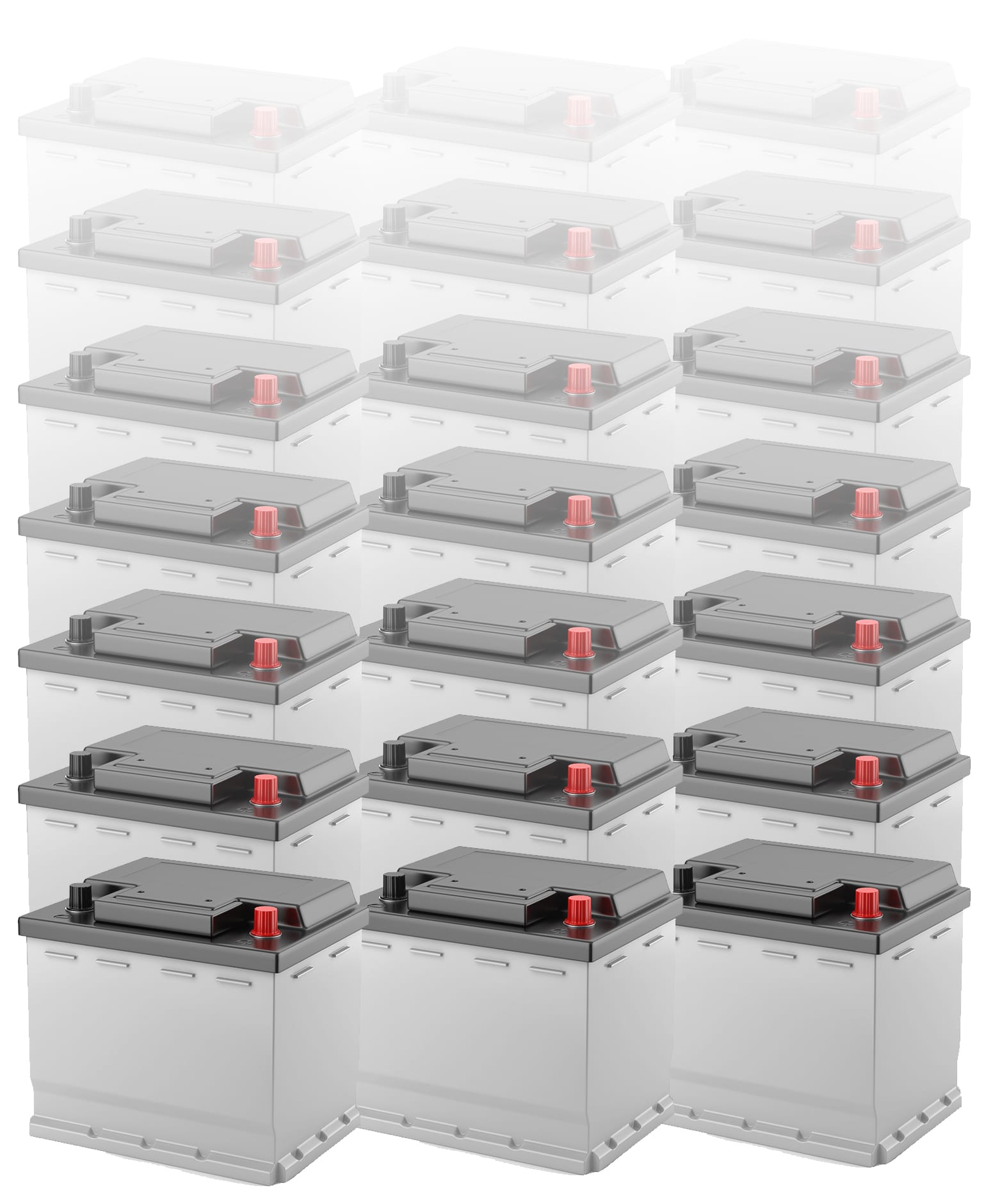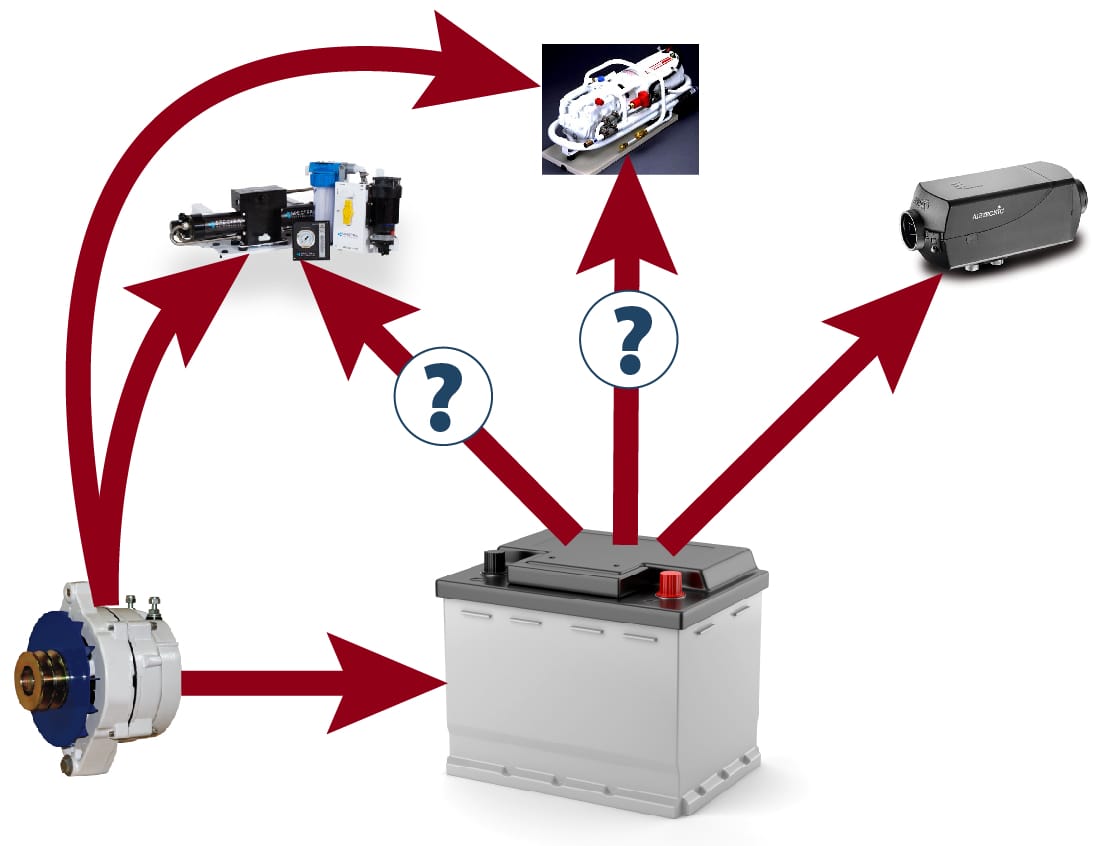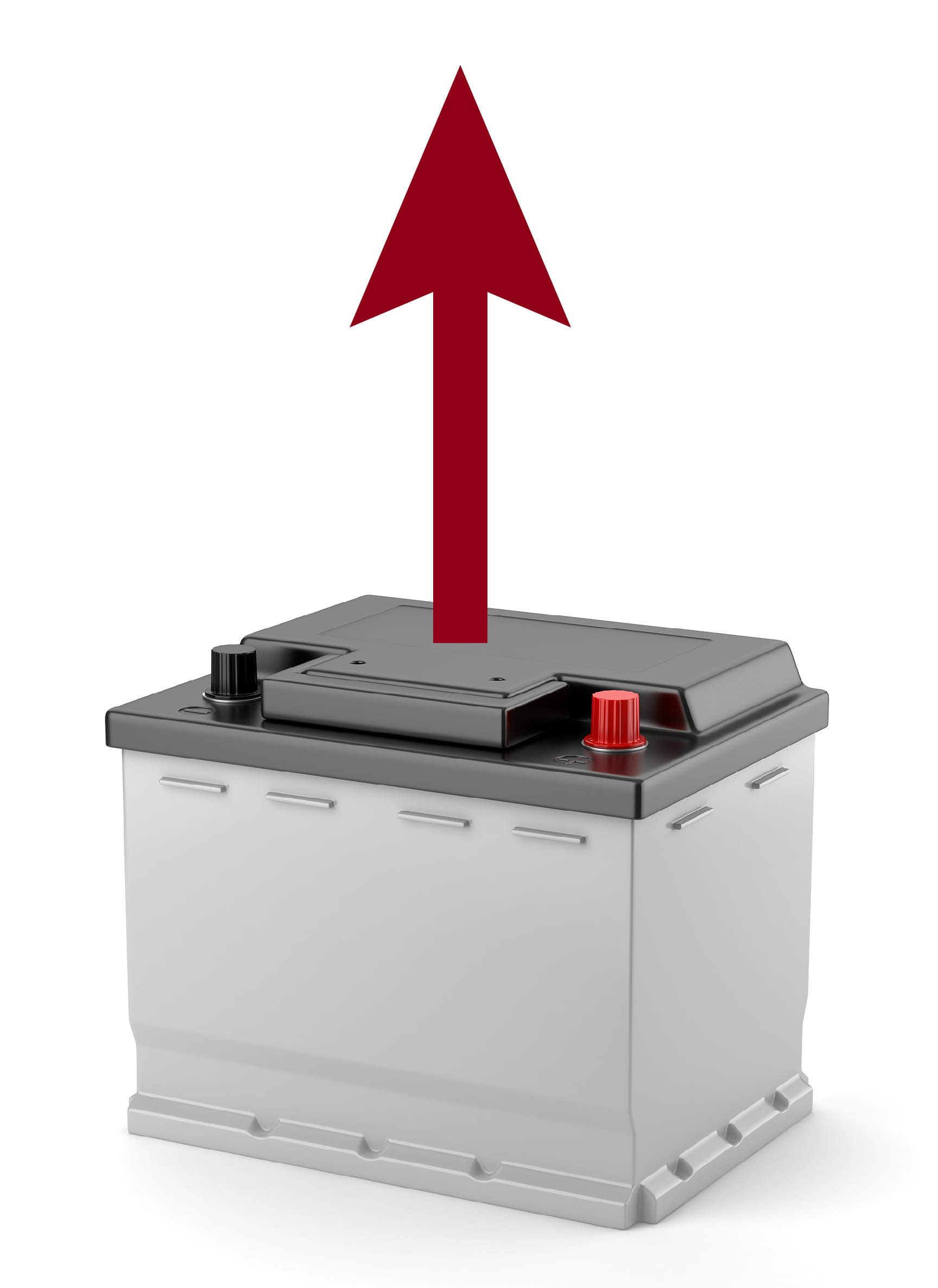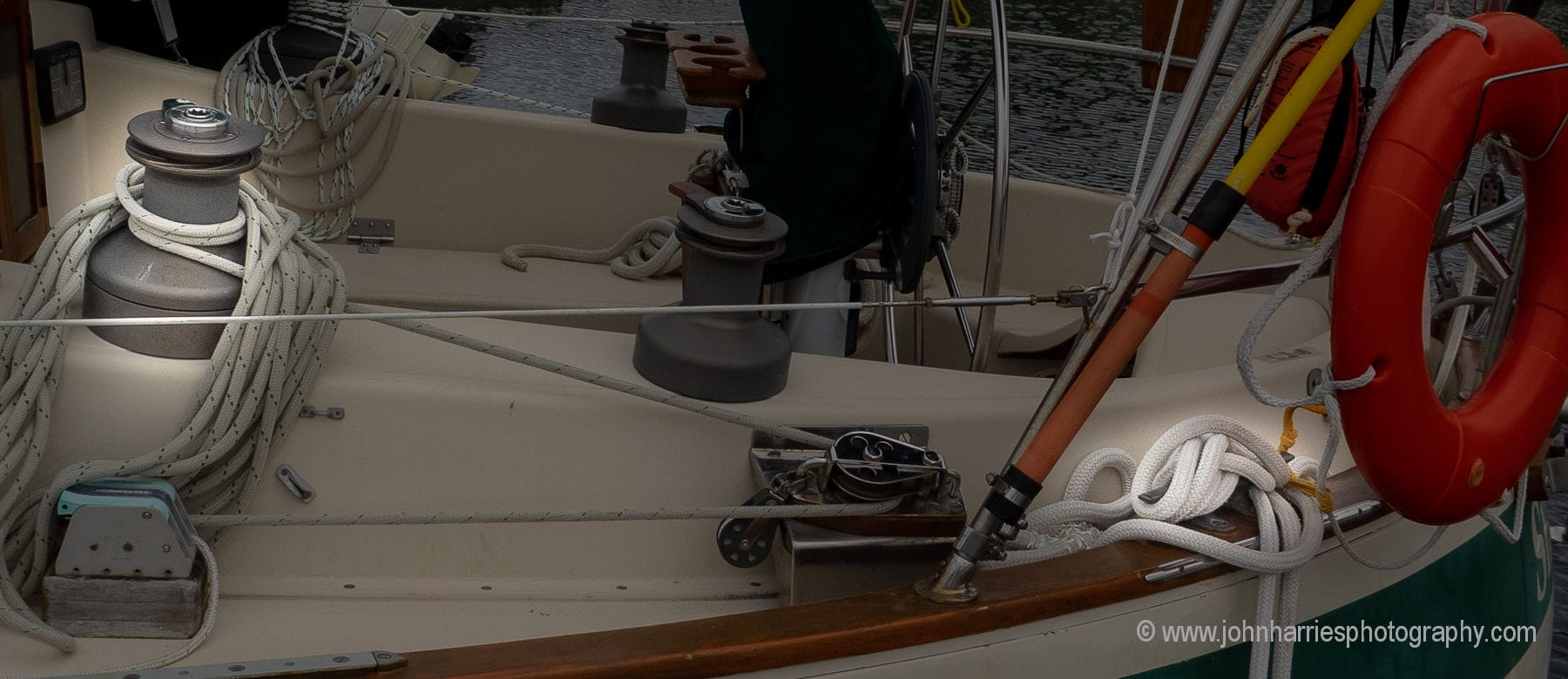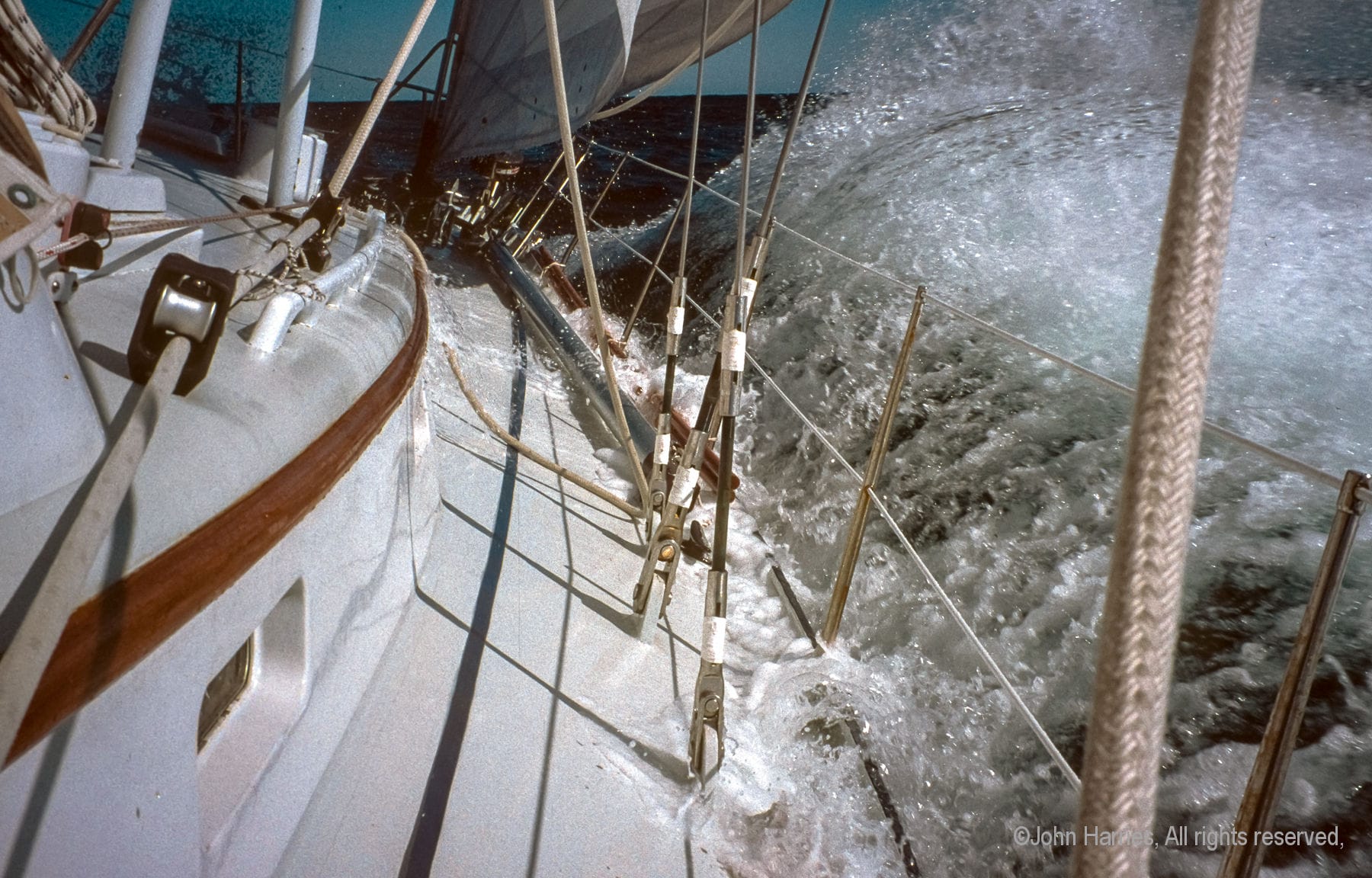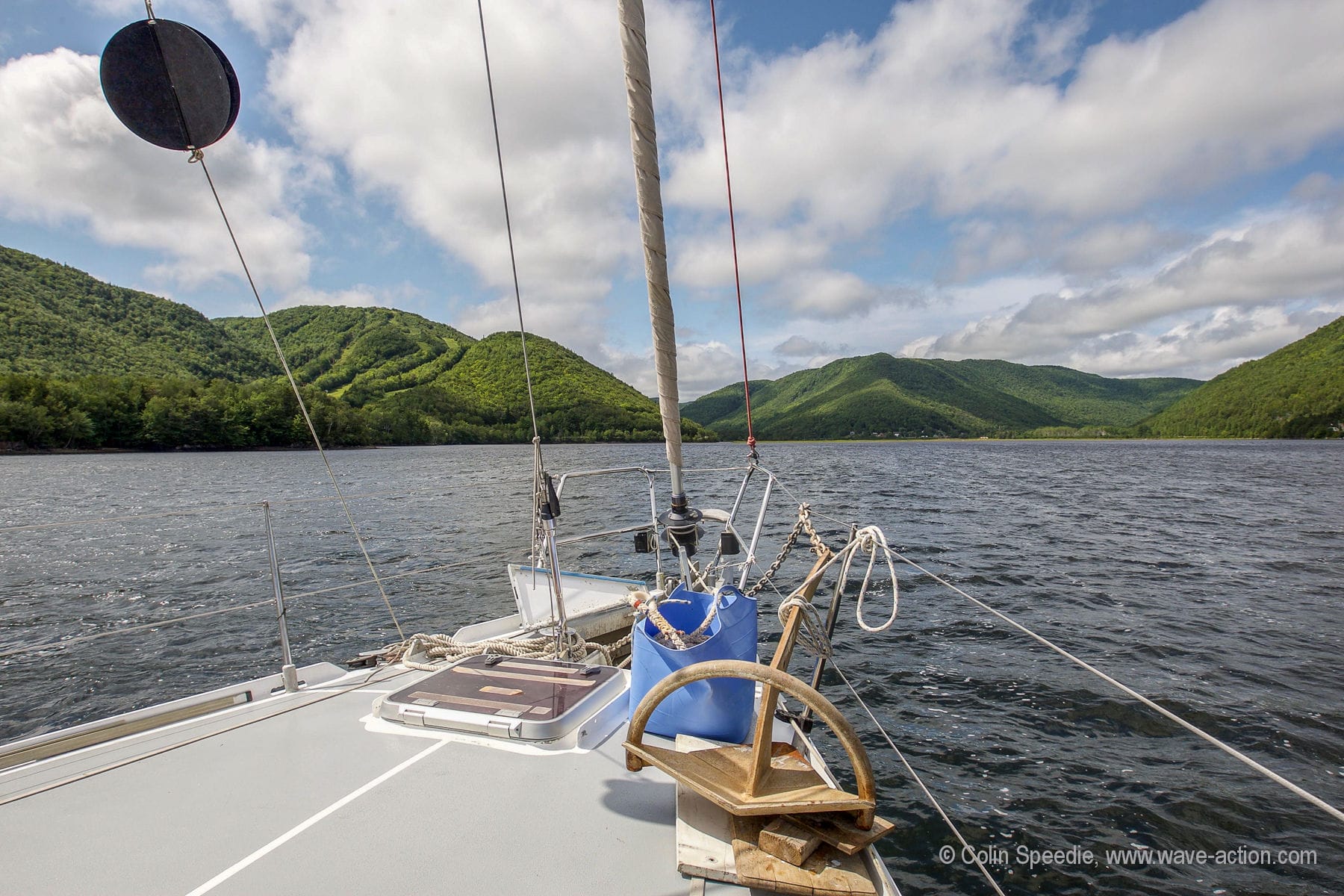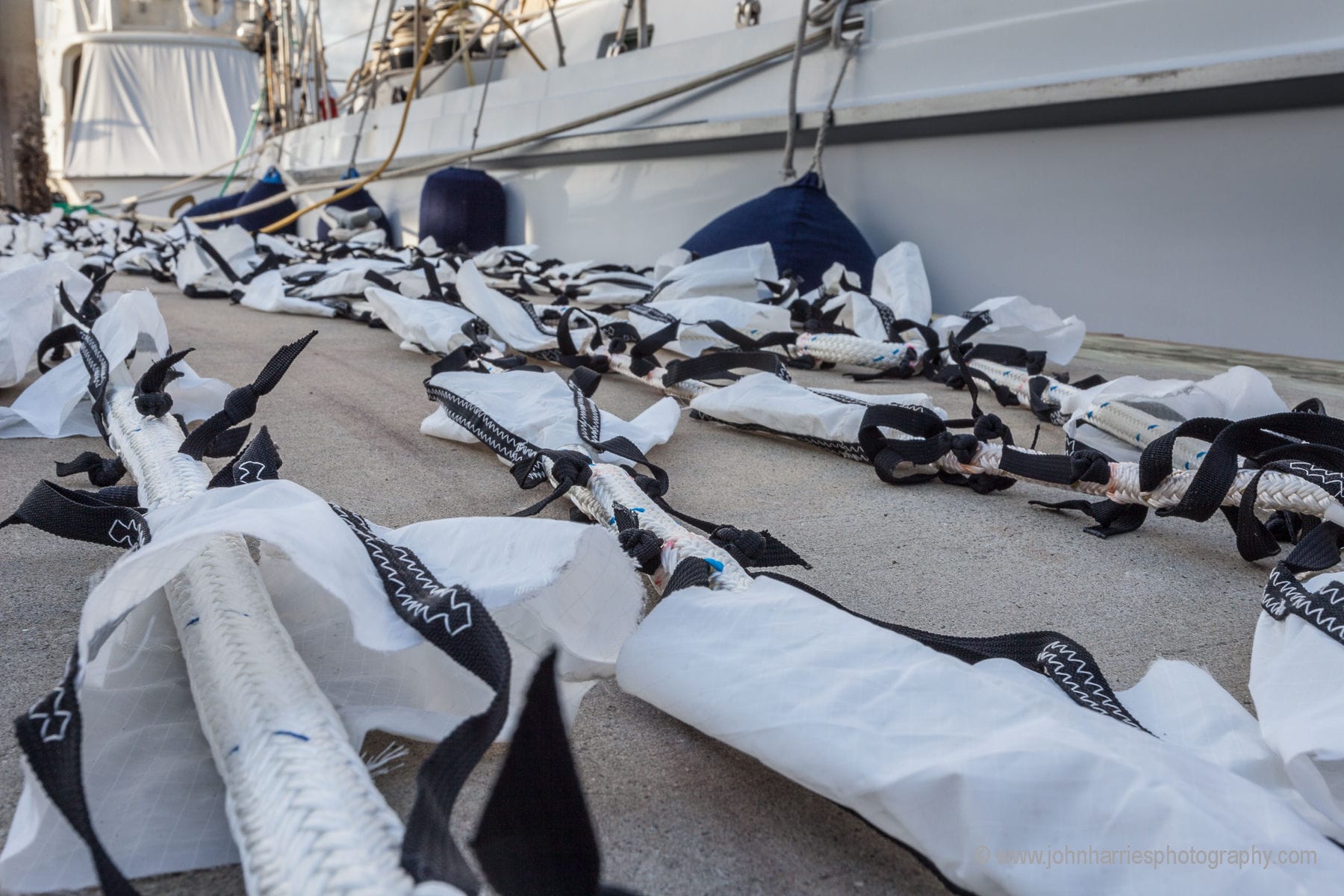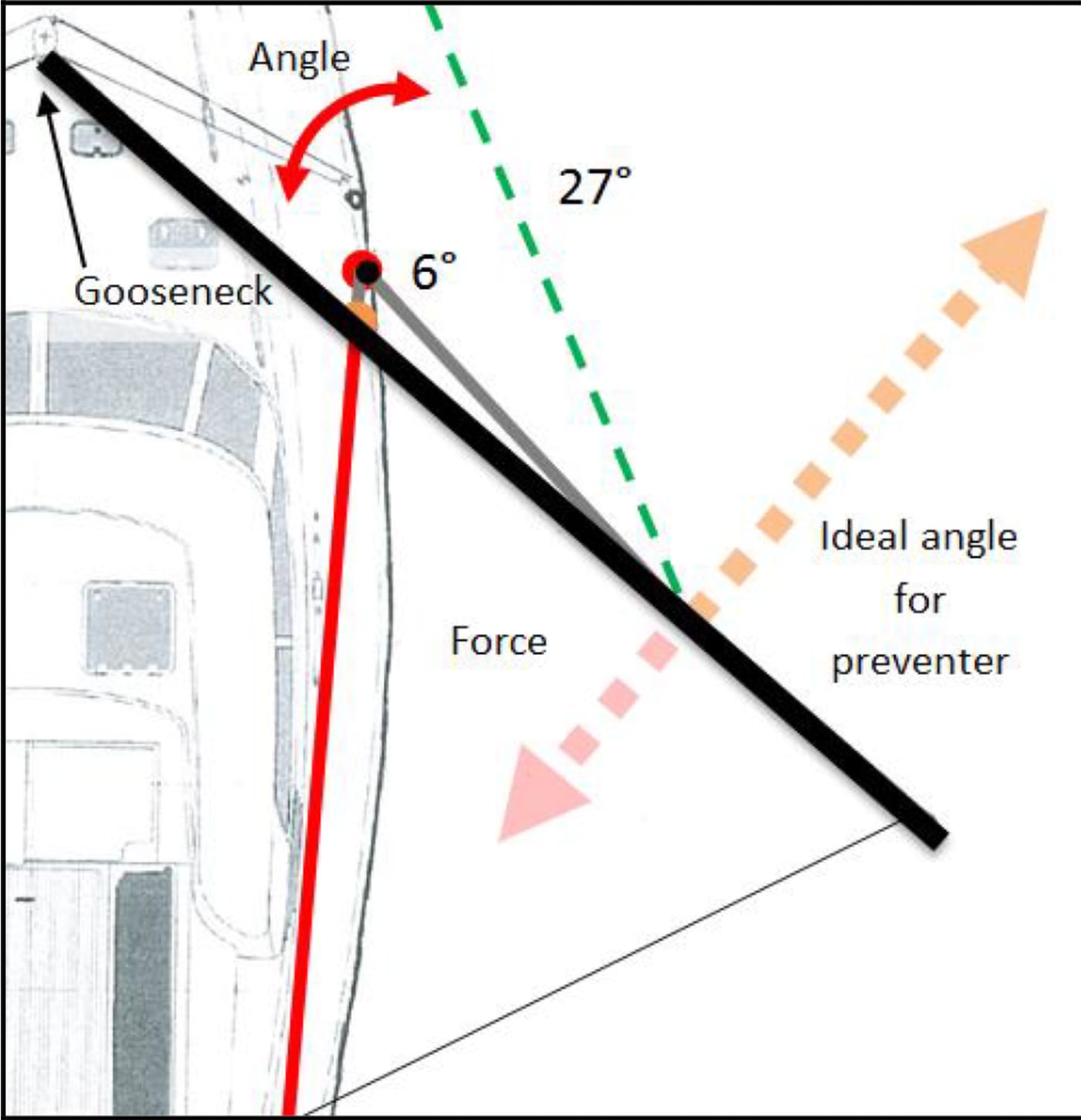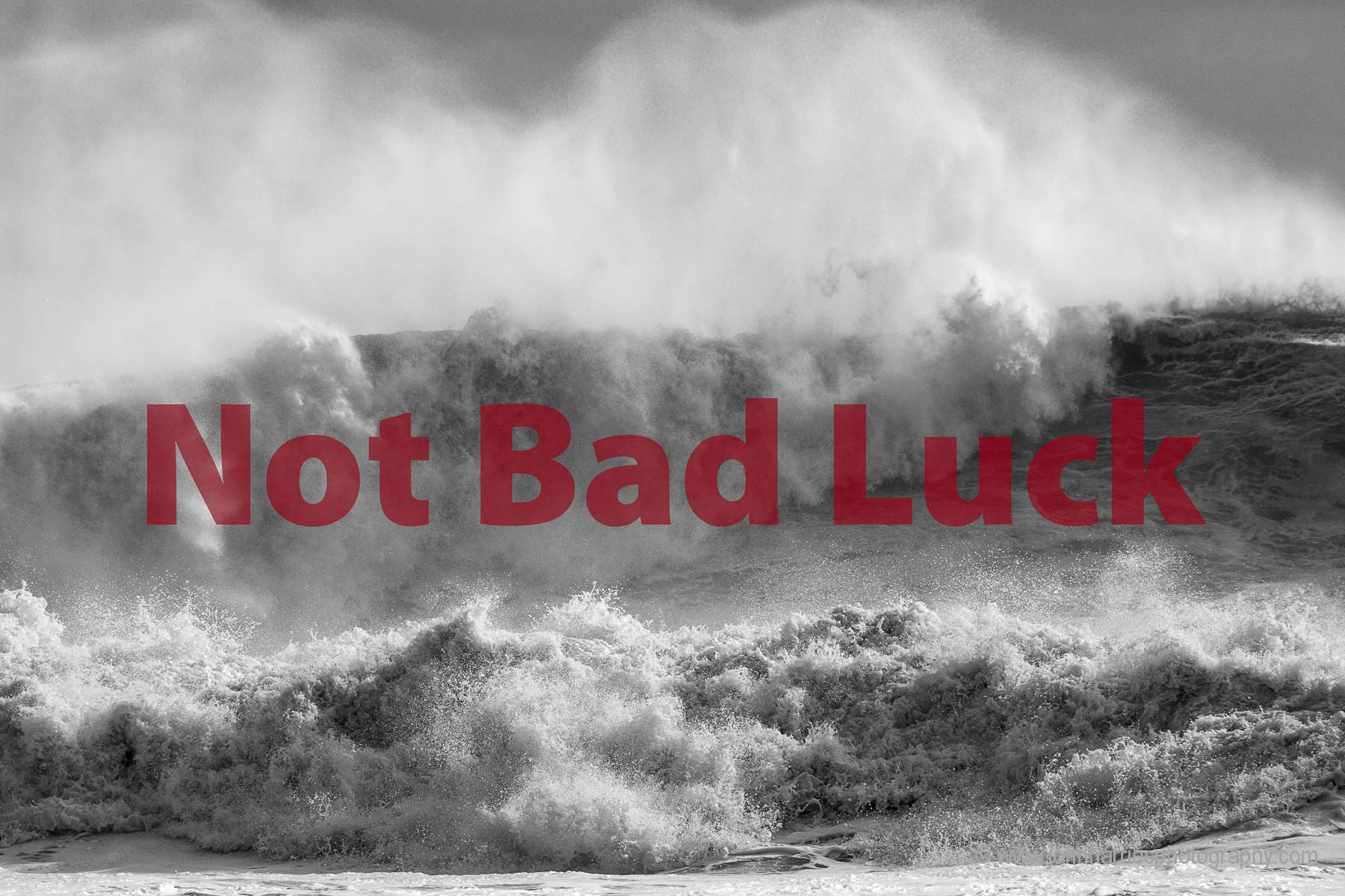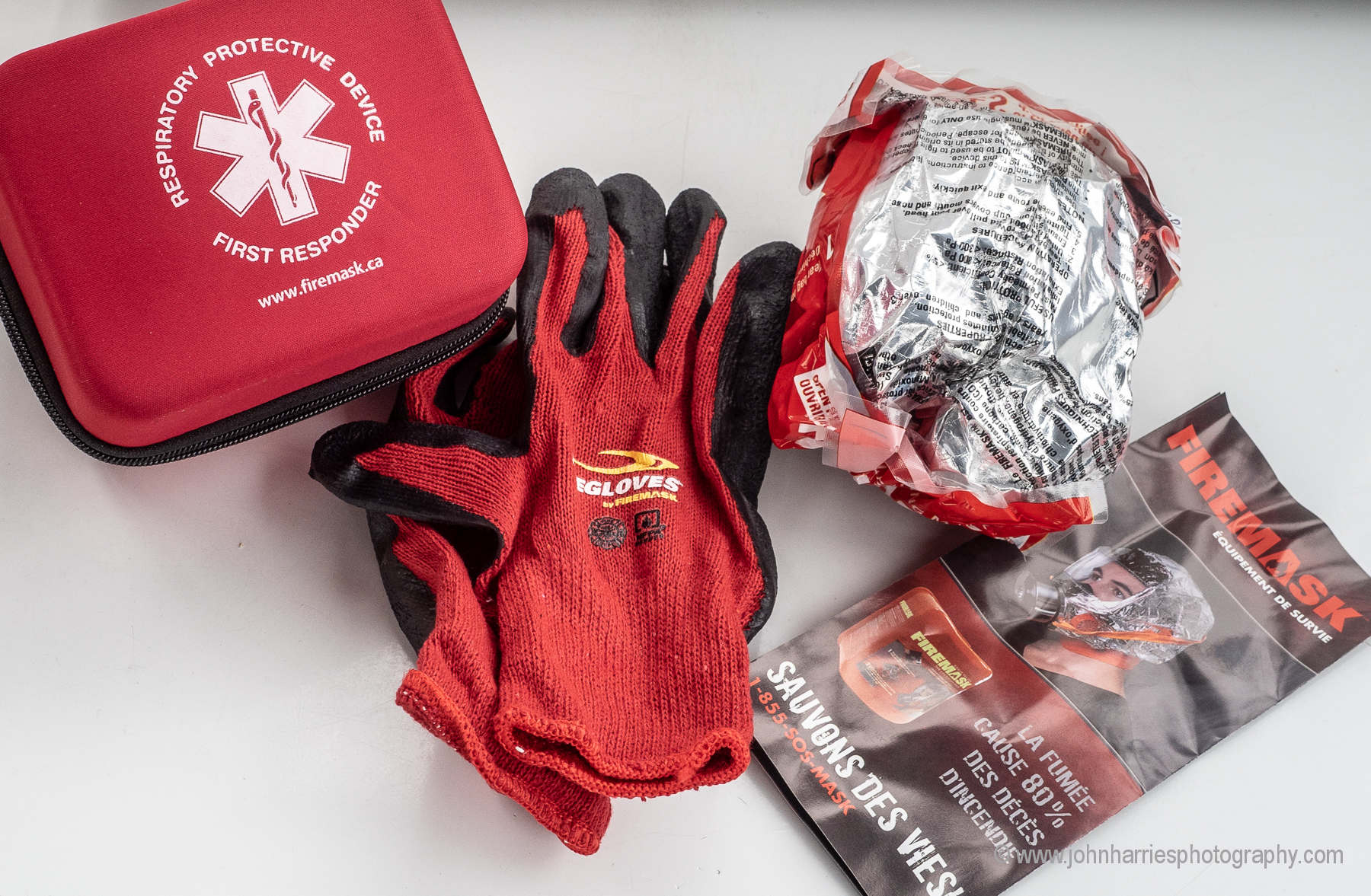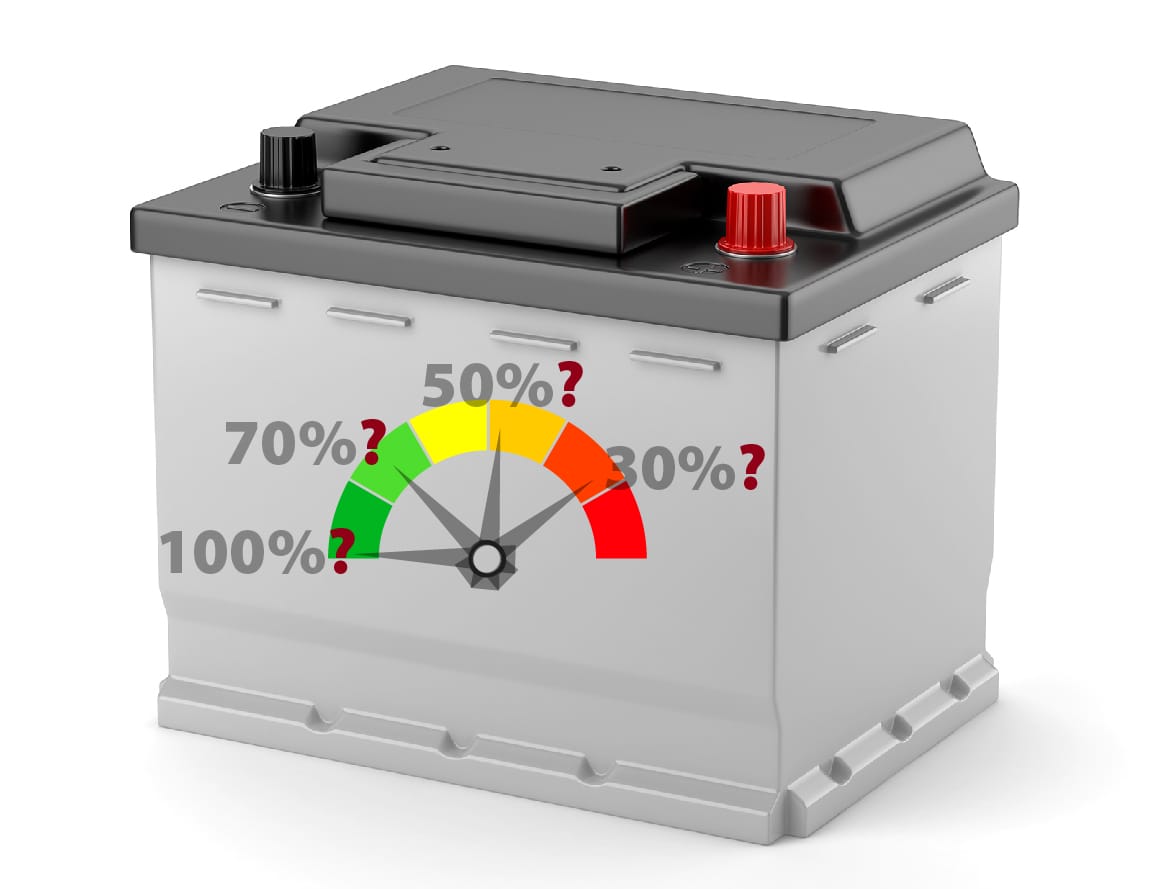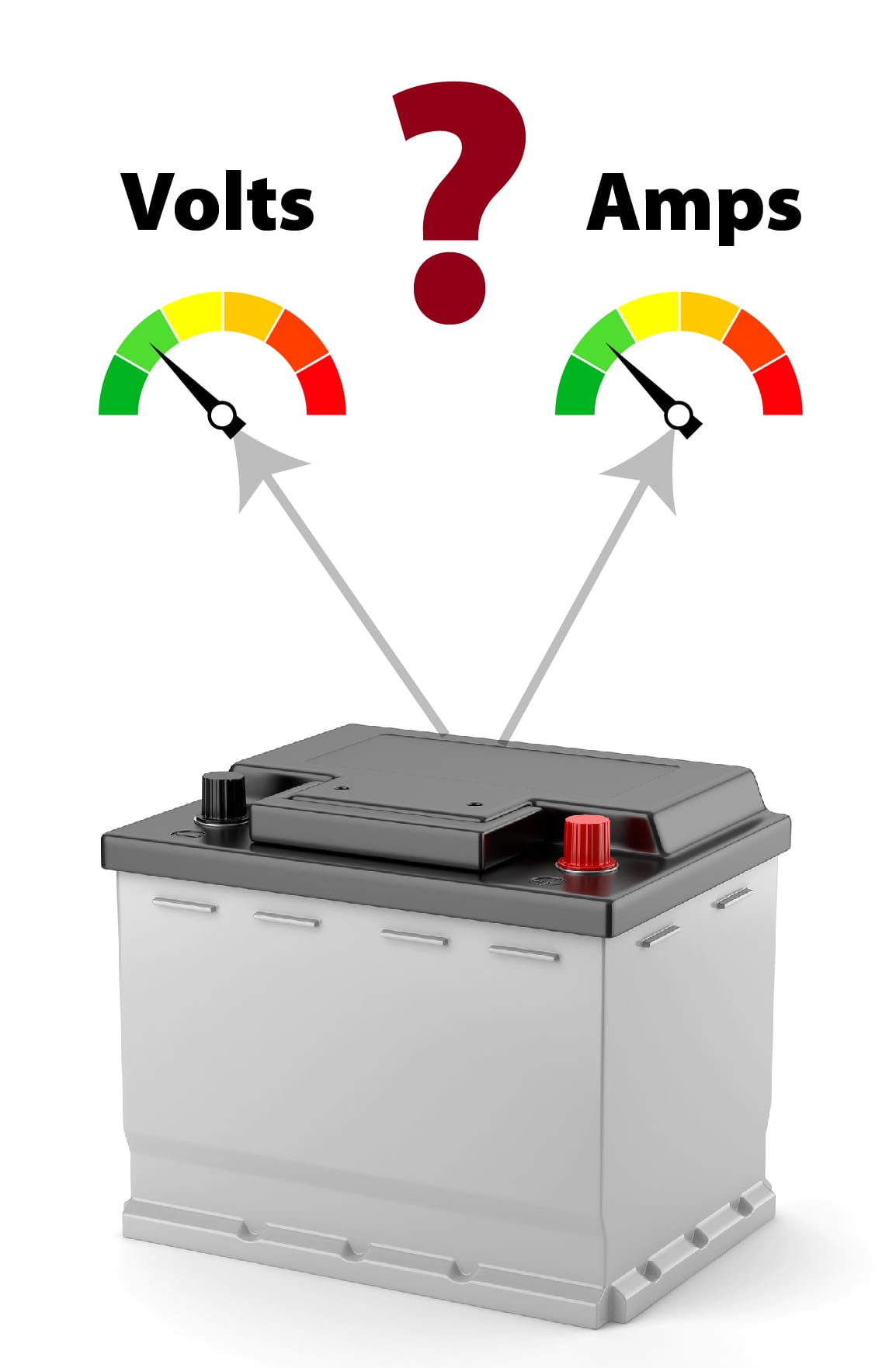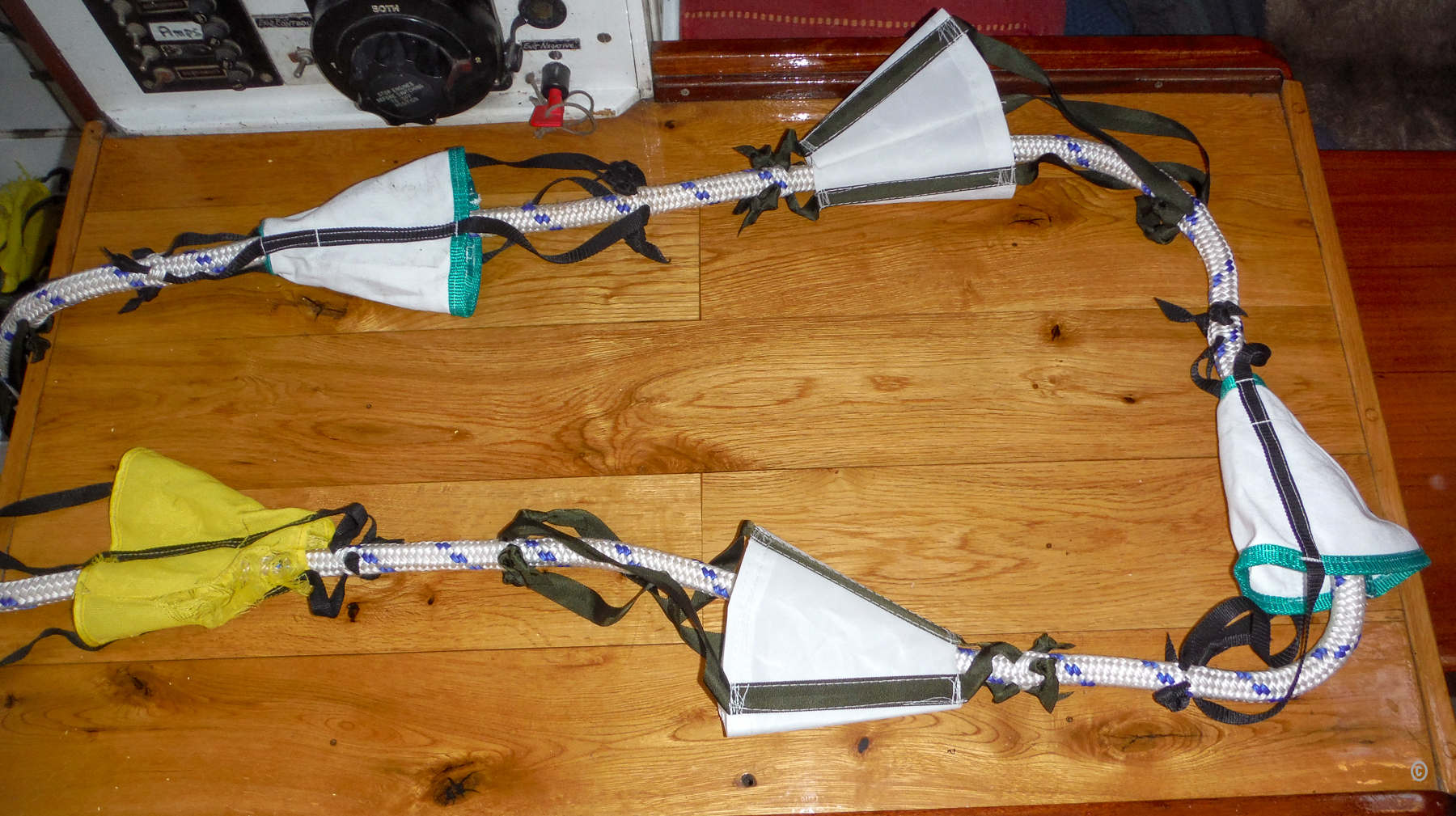MEMBERS
Click for TOC or scroll down for details
Articles in this topic:
- Sail Buying Tips
- Radar Collision Avoidance, Part 2—Turning Plotting Into Action
- Flawed Jackline Systems Revisited
- Radar Collision Avoidance, Part 1—Plotting
- TeamO Backtow Lifejacket/Harness Review
- 20 Practical Tips For Better Watchkeeping
- Reefing Tips
- 6 Tips For Mindful Watchkeeping
- How Many Reefs and How Deep?
- The Risks Of Sidedeck Jacklines Quantified
- 11 Tips For A Good Watch System
- Building a Robust and Practical Hard Dodger
- Tether Tension On A Dragging Crew Overboard
- 8 Offshore Cruising Boat & Gear Evaluation Tips
- Rigging Tips Part 2
- Spinlock Deckvest 6D Review
- Safe and Easy Offshore Sailing—When to Reef, Part 2
- Electrical Tips
- Why We Don’t Recommend Boom Brakes
- Safe and Easy Offshore Sailing—When to Reef, Part 1
- Building A Safer Boom Preventer, Part 3—The Details
- A Small-Boat Anchoring System
- When Is A Cruising Sailboat Too Big?
- Is Your Engine Properly Fused?
- Better Jacklines
- Building A Safer Boom Preventer, Part 2—Line and Gear Strength Calculator
- Building A Safer Boom Preventer, Part 1—Forces and Angles
- Surviving Storms While Coastal Cruising—21 Preparation Tips
- Rebuilding a Cobra Yacht Steering System—Reassembly
- Surviving Storms While Coastal Cruising—9 Tips for Anchorage and Harbour Selection
- Rebuilding a Cobra Yacht Steering System—Disassembly and Inspection
- Surviving Storms While Coastal Cruising—12 Strategy Tips
- 10 Reasons Why Hybrid Lithium Lead-Acid Systems are a Bad Idea
- Converting a Racing Sailboat to a Fast Cruiser—Performance and Rig
- Hurricane Mooring Weight Recommendation
- Lithium Buyer’s Guide—Budget: Economy Options
- Applying Power and Torque
- Hurricane Mooring Pennant Photo Article
- Understanding Power and Torque
- Lithium Buyer’s Guide—Budget: High End System
- Close to Home, Yet Far Away
- Wakespeed WS500 Compared To ARCO Zeus—What Matters
- 63 Cruising Boat Maintenance Tips
- Adventure 40 Electrical System—Part 1, Voltage and Batteries
- Deck Hardware Mounting Photo Essay
- Lithium Battery Buyer’s Guide—Fusing
- The Rolling Refit Continues
- Lithium Batteries Buyer’s Guide—Current (Amps) Requirements and Optimal Voltage
- The Zen of Sail Covers
- Lithium Batteries Buyer’s Guide—Balancing and Monitoring
- Selecting The Right Hull Form
- Lithium Batteries Buyer’s Guide—BMS Requirements
- Why We Have an eWincher on a Small Boat
- Electronic Chart Dangers
- Review of Ocean Signal PLB3 Against MOB1
- Weather Analysis—Part 2, Strategic
- Weather Analysis—Part 1, Tactical
- Yes, You Can Have an Offshore Sailboat For Less Than $US100,000
- Spade Anchor Failure, Update and Summary
- Weather Analysis—Hardware and Software
- Bilge Alarms And Monitoring
- Bent Spade Anchor Analysis
- 9 Tips to Assess Weather Forecast Accuracy
- Easily Driven Boats Are Better
- Sailing a New-To-Us Boat Home—What Could Go Wrong?
- Replacing Diesel-Generated Electricity With Renewables, Part 2—Case Studies
- Replacing Diesel-Generated Electricity With Renewables, Part 1—Loads and Options
- How Weight Affects Boat Performance and Motion Comfort
- Adventure 40 Cockpit 2.0
- Falmouth For Orders
- Watt & Sea Hydrogenerator Buyer’s Guide—Cost Performance
- To Sea At Last
- 10 Tips To Save Your Engine From Overheating
- Safety Inspection and Gear For a New-To-Us Boat
- Fire Extinguishers We Have Bought and Stuff We Learned
- Liferafts For Cruisers—Positioning and Mounting
- Starting With The Basics On A New-To-Us Cruising Boat
- Going Up The Mast—More Improvements
- Liferafts For Cruisers—40 Years of Real-World Experience
- Nine Autopilot Usage Tips and Hacks
- Liferafts For Cruisers—Purchase Criteria
- How To Tune An Autopilot To Steer Better—Part 2
- Finding and Buying a Dream
- Adventure 40 Deck-2.0
- How To Tune an Autopilot to Steer Better—Part 1
- Autopilot Buyer’s Guide
- Storm Strategy—Fore-Reaching
- Colin and Louise Have a New Boat
- Eight Steps to Get Ready For Lithium Batteries
- Q and A—Trucking a Boat
- A Real World Tested Tool Kit For Cruisers
- Five Boat Lift Usage Tips
- Adventure 40 Reveal—Salon and Forward Cabin
- Balancing Battery Bank and Solar Array Size
- Going Up The Mast at Sea
- Adventure 40 Reveal—Galley, Head, and Aft Storage
- Gear Leveling and Mounting Hack
- Going Up The Mast—Four Dangerous But Common Mistakes
- How To Do Amateur Engineering¹
- Going Up The Mast—Our System
- Going Up The Mast—Fundamentals
- Adventure 40 Reveal—On Deck
- Going Up the Mast—An Industrial Fall Prevention Approach
- Adventure 40 Reveal—Hull, Cockpit, and Rig
- In-Mast, In-Boom, or Slab Reefing —Performance, Cost and Safety
- In-Mast, In-Boom, or Slab Reefing—Convenience and Reliability
- Cross-Bank Battery Charging—DC/DC Chargers
- Cross-Bank Battery Charging—Splitters and Relays
- Battery Bank Separation and Cross-Charging Best Practices
- How Hard Can We Charge Our Lead-Acid Batteries?
- Choosing & Installing Battery Switches
- Battery Containment—Part 1
- 5 Safety Tips For Working on Boat DC Electrical Systems
- Building a Seamanlike Lithium Battery System
- Two More Shore Power Safety Upgrades
- 9 Tips To Select Seamanlike Gear
- Download Cruising Sailboat Rig Checklist
- When Stuff Goes Wrong At Sea
- 8 Tips To Prevent Lithium Battery Black Outs
- Why Lithium Battery Load Dumps Matter
- Cruising Sailboat Roller Furler and Track Inspection
- Positioning of Wood Plugs For Seacocks
- The True Price of Autopilots & Vane Gears
- Cruising Sailboat Rig Wiring and Lighting Inspection
- 7 Checks To Stop Our DC Electrical System From Burning Our Boat
- 11 Self-Steering Vane Gear Installation and Usage Tips
- Why Most New-To-Us Boat Electrical Systems Must Be Rebuilt
- Cruising Sailboat Running Rigging Inspection
- 12 Cruising Boat Maintenance Tips
- WakeSpeed WS500—Best Alternator Regulator for Lead Acid and Lithium Batteries
- Cruising Sailboat Standing Rigging Inspection
- Cruising Sailboat Spar Inspection
- Test Sail and Review of The Boréal 47.2
- Going Alongside (Docking)—12 More Tips and Tricks
- John Goes Sailboat Racing and Learns Stuff
- Protecting Our Boat’s Underwater Metals From Corrosion
- Going Alongside (Docking) in Current—Backing In
- Details Matter—Engine Failure at Sea
- Going Alongside (Docking) in Current—Turning in Confined Spaces
- Going Alongside (Docking) in Current—Fundamentals
- Helping a Member Choose an Anchor
- A Good First Aid Kit
- Why I Won’t Power Our Boat With a Portable Generator
- Setting and Striking a Spinnaker Made Easy and Safe
- Check Your Boat Shore Power System
- Our New Boat Selection Process—Fitness For Mission
- Cruiser’s Tool Kit—Wrenches
- 29 Tips To Get Insurance For Offshore Voyaging—Negotiating Cover
- 29 Tips To Get Insurance For Offshore Voyaging—Us and Our Boat
- Cruiser’s Power Tool Kit
- Leaving a Dock Against an Onshore Wind—Part 2
- Leaving a Dock Against an Onshore Wind—Part 1
- Getting Insurance For Offshore Voyaging—Understanding The Problem
- 14 Tips To Come Alongside Single-Handed—Part 2
- 14 Tips for Coming Alongside Single-handed—Part 1
- Integrating and Documenting NMEA 0183 and 2000 Networks
- Two More Anchor Selection Criteria
- Making Anchor Tests More Meaningful
- Choosing A Cruising Boat—Shade and Ventilation
- When Electric Drive Works For a Cruising Sailboat
- Roller Furling Headsail Risks and Rewards
- Choosing a Cruising Boat—Shelter
- Q&A—Sailboat Performance, When The Numbers Fail
- Offshore Sailboat Winches, Selection and Positioning
- Best Offshore Boat Cockpit Cushions
- Buying a Boat—A Different Way To Think About Price
- Safety: We Can’t Do Or Even Learn About It All
- Cockpits—Part 2, Visibility and Ergonomics
- Cooking Options For Live-aboard Voyagers—Part 2, Liquid Fuel
- Cooking Options For Live-aboard Voyagers—Part 1, Electric
- Cockpits—Part 1, Safe and Seamanlike
- Should Your Boat’s DC Electrical System Be 12 or 24 Volt?—Part 2
- Should Your Boat’s DC Electrical System Be 12 or 24 Volt?—Part 1
- Topping Lift Tips and a Hack
- The Danger of Voltage Drops From High Current (Amp) Loads
- Rigid Vangs
- Maretron—Better NMEA 2000 Cabling
- Efficient Generator-Based Electrical Systems For Yachts
- Is Induction Cooking For Boats Practical?
- eWincher Electric Winch Handle Review—Part 3, Reliability and Summary
- eWincher Electric Winch Handle Review—Part 2, The Competition
- eWincher Electric Winch Handle Review—Part 1, Our Testing
- Second Level Thinking About Offshore Voyaging Boats
- SeaAngel SA15 AIS Crew Overboard Beacon Compared to The Ocean Signal MOB1
- Sailboat Deck Layouts
- US$30,000 Starter Cruiser—Part 2, The Boat We Bought
- US$30,000 Starter Cruiser—Part 1, How We Shopped For Our First Cruising Sailboat
- Washing Machines: Complexity and Space Considerations
- Planning a Refit— Keel Removal and Inspection
- Q&A Backing Out of a Bow-In Med Moor
- Two New Designs From Boréal
- Stupid Alternator Regulators Get Smarter…Finally
- Sail Area: Overlap, Multihulls, And Racing Rules
- Torquing Keel Bolts
- Refits—The Radical Option
- Non-Destructive Testing of Keel Bolts
- Cruising Rigs—Sloop, Cutter, or Solent?
- Offshore Sailboat Keel Types
- Outbound 46 Review—Part 2, Keel, Rudder, Bow Thruster, and Construction
- Planning and Budgeting an Engine Rebuild or Replacement
- Outbound 46 Review—Part 1, Hull Form
- Planning a Refit—Upfront Costs
- ShoreFasts—Part 3, The Gear
- ShoreFasts—Part 2, Example Setups Plus Tips and Tricks
- ShoreFasts—Part 1, When to Use Them
- Planning a Refit—Rudders, Repair or Replacement
- Planning a Refit—The Problem With Rudders
- Yawing at Anchor, The Theory and The Solution
- Planning a Refit—Boat Parameters
- Retrieval of Dyneema (Spectra) Series Drogues Solved
- Planning a Refit—It’s a Lot About You
- Anchoring—Chain: Stoppers, Termination and Marking
- A Sail Away Offshore Cruising Boat For Less Than US$100,000—Best Hull Material
- Anchoring—Kellets
- A Sail Away Offshore Cruising Boat For Less Than US$100,000—Rudders and Keels
- A Sail Away Offshore Cruising Boat For Less Than US$100,000—Decks, Hulls and SS Fittings
- Anchoring—Snubbers
- A Sail Away Offshore Cruising Boat For Less Than US$100,000—Introduction
- Four Hand Tools I Should Have Bought Years Ago
- The Garcia Exploration 45 Compared to The Boréal 47—Part 5, Interior, Summary and Price
- The Garcia Exploration 45 Compared to The Boréal 47—Part 4, Inside Watch Stations
- Insanely Cool Anchorage Toys
- The Garcia Exploration 45 Compared to the Boréal 47—Part 3, Hull and Build
- Passage Anchorages
- The Garcia Exploration 45 Compared to the Boréal 47—Part 2, Deck and Cockpit
- The Garcia Exploration 45 Compared to the Boréal 47—Part 1, Introduction and Rig
- Ultra Anchor Review
- Which is Best For Navigation: Plotter, Computer or Tablet?
- Buying a Boat—Never Say Never
- New Satellite Communications Systems
- What We Need to Know About Moisture Meters and Wet Fibreglass Laminate
- Buying a Fibreglass Boat—Hiring a Surveyor and Managing the Survey
- A Useful, But Potentially Deadly, Feature of Navigation Apps and Plotters
- Buying a Cruising Boat—Five Tips for The Half-Assed Option
- 12 Electronic Navigation Tips From a Cruise on Someone Else’s Boat
- Coastal Passages, Part 5—On To The Finish
- You May Need a Bigger Boat Than You Think
- Costal Passages, Part 4—Keep On Plugging
- Six Things We Need to Check Before Survey
- Series Drogues: Learning From Randall Reeves
- Coastal Passages, Part 3—Off We Go
- Why Are Saildrives Even A Thing?
- Coastal Passages, Part 2—Rounding Headlands
- Six Things We Can Learn From A Night Approach That Ended on a Lee Shore
- Coastal Passages, Part 1—Making a Plan, 10 Tips
- Six Warnings About Buying Fibreglass Boats
- Rocna Resetting Failures and Evaluation of Vulcan and Mantus
- Learn From The Designers
- Refitting an Old Boat Can Work…For Some
- Specifying Primary Anchor Size
- SPADE, SARCA Excel, or Some Other Anchor?
- UV Protection For Roller Furling Sails
- Nigel Calder’s Integrel, Part 2—Is It Really Better Than a Generator?
- Nigel Calder’s Integrel, Part 1—What You Need To Know
- SARCA Excel Anchor—A Real World Test
- Cruising Boat Electrical System Design, Part 3—Specifying Optimal Battery Bank Size
- Cruising Boat Electrical System Design, Part 2—Thinking About Systems
- Cruising Boat Electrical System Design, Part 1—Loads and Conservation
- Alternatives to Chainplates For Drogue Attachment…Or Not
- Stuff We Gotta Do—The Anchor Roller Version
- Ocean Passaging—Turning Back Is Hard To Do
- Anchor Chain Catenary, When it Matters and When it Doesn’t
- Which Old Salts Should We Listen To? 10 Ways To Decide—Part 2
- Colin on Anchoring
- Which Old Salts Should We Listen To? 10 Ways To Decide—Part 1
- Storm Survival FAQ
- AIS Crew Overboard Beacons—Setting Up The Boat Alarms Right
- Just Get a Series Drogue Designed By Don Jordan…Dammit!
- Amidships “Preventers”—A Bad Idea That Can Kill
- Rogue Waves Are Not Bad Luck
- 5 Ways We Are Updating Our Thinking On Fire Fighting
- Battery Monitors, Part 3—Calibration and Use
- Battery Monitors, Part 2—Recommended Unit
- Battery Monitors, Part 1—Which Type Is Right For You?
- Battle Testing a Jordan-Designed Series Drogue—Round 2
- Rigging Tips Part 1
- 10 Things That Are Common On Offshore Cruising Boats…But Shouldn’t Be
- Rig Tuning, Part 5—Sailing Tune
- Battery Bank Size and Generator Run Time, A Case Study
- Rig Tuning, Part 4—Mast Blocking, Stay Tension, and Spreaders
- Rig Tuning, Part 3—6 Steps to a Great Tune
- Rig Tuning, Part 2—Understanding Rake and Bend
- Rig Tuning, Part 1—Preparation
- Battery Options, Part 2—Lead Acid
- Battery Options, Part 1—Lithium
- Two Dangerous Rigging Mistakes
- Boréal Yachts—Looking To The Future
- Boréal Yachts—Eight Years On
- 8 Things I Learned From a Lazy Man’s Galley Makeover
- Time to Stop Using And Selling Tethers with Gibb-style Hooks
- Crew Overboard Recovery—Our Replacement For Quick Stop
- Crew Overboard Recovery, Is The Quick Stop Bogus?
- Which Lifejacket Auto-Inflator Should We Select?
- Should We Wear Lifejackets or Harnesses, Both, Neither?
- Apps to Manage Boat Maintenance and Cruises
- Managing Boatyard Costs—Part 2
- Managing Boatyard Costs—Part 1
- Smartphone (CrewWatcher) or AIS-Based Crew Overboard Beacons?
- Severe Weather Probability Forecast Product
- Coming Alongside (Docking)—Backing In, Part 2
- Coming Alongside (Docking)—Backing In, Part 1
- Surviving The Boatyard—Part 2
- Surviving The Boatyard—Part 1
- Running Rigging Recommendations—Part 2
- Weather Routing In Action
- Running Rigging Recommendations—Part 1
- 29 Aluminum Boat Care Tips—Part 3
- Automated Weather Routing—Part 1, The Tools
- 29 Aluminum Boat Care Tips—Part 2
- Q&A, Coming Alongside (Docking) With Twin Rudders
- 29 Aluminum Boat Care Tips—Part 1
- Seven Skills We DON’T Need to Go Cruising
- The Golden Globe Race—The Boats and the Refits
- We Love The Way Our Anchor Drags
- Iridium GO! and UUPlus, Real World Use Review
- Watt & Sea Hydro Generator Review
- Can We Really Be Seen By Ships at Night?
- Crew Overboard Prevention—Use of Climbing Harnesses
- Coming Alongside (Docking)—Taming the Wind
- Coming Alongside (Docking)—The Final Approach
- Coming Alongside (Docking)—Manoeuvring in Close Quarters
- Battle Testing a Jordan-Designed Series Drogue—Round 1
- Get-Home Backup For Offshore Motorboats—Part 3, The Winner
- Get-Home Backup For Offshore Motorboats—Part 2, The Options
- Get-Home Backup for Offshore Motorboats—Part 1, Is It Even a Thing?
- Boat Heating—Part II
- Determining When Heaving-To Is Dangerous
- 10 Ways to Make Your Boat Easier to Bring Alongside a Dock
- Boat Heating—Part I
- Rigging The Spring That Makes Docking Easy, Or an Alternative
- Coming Alongside (Docking) in 4 Easy Steps
- Transitioning From Heaved-to To a Series Drogue
- Series Drogue Durability Problems
- The Right Tethers To Keep Us Aboard—Part 2, Construction and Hardware
- The Right Tethers To Keep Us Aboard—Part 1, A Mix
- 8 Radar Use Tips
- Three Tips to Make Your Cruising Boat Fault Tolerant
- 11 Tips for Safe Navigation With Phones and Tablets
- Navigation in Fog—Underway
- Navigation in Fog—Preparation
- Navigating in Fog—The Tools
- The Artnautica LRC 58 Adventure Edition Offshore Motorboat
- Thinking About Better Offshore Motorboats
- Jacklines: Materials, Fabrication and Installation
- The Unknown Unknowns
- An Easy Way to Avoid Engine Failures
- Designing For Dux Rope Rigging—A Paradigm Shift—Part 2
- Dynice Dux, Part 1: Practical Low-Stretch Rope Rigging For Offshore Sailboats
- What Marine Engine Duty Ratings Mean To You
- A Sailor’s Cockpit Enclosure—Part 2
- A Sailor’s Cockpit Enclosure—Part 1
- Keeping Things Tasty—Tips For Food Storage (With No Refrigeration) & Meal Preparation
- Keeping Things Tasty—A 36,000-Mile Lesson In Provisioning
- The Perfect Anchor Roller
- The Three Keys To Cruising Happiness
- Q&A—Are Battery Desulphators a Good Idea?
- Hoisting the Mainsail Made Easy—Simplicity in Action
- Ten Tips To Fix Weather Helm
- How Batteries Charge (Multiple Charging Sources Too)
- Maiden Voyage of The Boreal 55—What Worked and What Didn’t
- One Simple Law That Makes Electrical Systems Easy to Understand
- Things I’ve Learned From Three Refits That Will Help You
- Giving a Tough Old Ocean Greyhound a New Purpose
- Refitting a Wauquiez Hood 38
- A Trans-Atlantic Boat For Less Than US$100,000
- How To Select The Best Power and Propeller Settings For Your Engine
- How To Stop Killing Your Engine With Kindness
- Controllable Pitch Propellers (CPPs)
- The Ultimate Guide to Using Iridium Handsets and GO!
- Going Cruising—Being Realistic About You, 4 Tips
- Iridium GO! Review—6 Myths Busted and a Purchase Recommendation
- 4 Great Tips From a Professional Meteorologist
- Mooring Your Dinghy While Ashore, Made Easy
- “Eala Bhan” Sails Home, Part III
- Keeping Safe From Chart Inaccuracies
- “Eala Bhan” Sails Home, Part II
- Five Tips For Choosing Weather Information to Believe…And Pay For
- “Eala Bhan” Sails Home—The Maiden Voyage of The Boréal 55
- Marine Electronics Recommendations—Communications
- Marine Electronics System Recommendations
- Two Tips to Make Your First Ocean Passage as Skipper Safe and Fun
- Anchor Tests—The Good, The Bad, and The Downright Silly
- Cutter Rig—Optimizing and/or Converting
- Cutter Rig—Should You Buy or Convert?
- 12 Reasons The Cutter Is A Great Offshore Voyaging Rig
- Propeller Efficiency
- Ten Ways to Make Propane Safer
- Boat Maintenance—Don’t Go Broke Saving Money
- Boréal 47—An Owner’s Experience
- Third Anchors, Storm Anchors and Spare Anchors
- Understanding An Engine Fuel Map
- Better Powertrains For Auxiliary Sailboats and Motorboats
- Downwind Sailing—Poling Out The Jib
- Downwind Sailing, Tips and Tricks
- Kedge (Secondary Anchor)—Recommended Type and Size
- Boat Maintenance—What’s Your Screwup Tolerance?
- Tools and Techniques For Managing Dissimilar Metals on Cruising Boats
- The Crazy Fools…Who Don’t Drown
- The Only Five Knots You Need to Know
- Attainably Adventurous Children
- Marine Electronics Recommendations—Radar
- Yawing at The Anchor, an Alternative Cure
- Spare Parts—Which To Buy and How To Keep Track Of Them
- Reefing From The Cockpit 2.0—Thinking Things Through
- The Secret Life Of Your GPS
- Getting Your Mojo Back
- A Real Sailor’s Motorboat Launched
- The Two Biggest Lies Yacht Brokers Tell
- Q&A: Safety of Large Pilothouse Windows
- Download Your Gift eBook
- Rustler Yachts: Maybe There’s Hope Yet?
- The Loss of “Team Vestas Wind”
- 9 Tips To Make Unstepping a Sailboat Mast Easier
- Our Mainsail Is Our Friend
- 6 Tips To Stop Marine Electronics From Ruining Your Cruise
- Perfect or Good Enough?
- Staying Attached To The Boat
- Install A Wash-down Pump—And Save Money!
- Motorboating and Sailing Compared—Part 2
- Motorboating and Sailing Compared—Part 1
- Crash Pump
- The Right Way to Buy a Boat…And The Wrong Way
- Estimating The Cost of Maintaining a Cruising Boat
- You Need More Than Money
- The World’s Best Bilge Pump Switch
- Loss of Yacht “Tao”
- Do You Need A Generator?
- Real Numbers For Electric And Diesel-Electric Drives
- Five Ways That Bad Boats Happen
- Backup Systems
- Do You Still Need Paper Charts?
- Protecting Against Lightning Strikes
- John & Phyllis’ 36 Immutable Rules of Seamanship
- Lithium Ion Batteries Explained
- Two Yacht Losses, Many Lessons Learned
- 20 Tips To Get Anchored and Stay Anchored
- 10 Tips To Install An Alternator
- 10 Tips to Help You Get Out There Cruising
- Artnautica 58—Design Analysis
- Design Parameters For an Ideal Sailor’s Motorboat
- Selecting a Chain Grade
- Mainsail Handling Made Easy with Lazyjacks
- Do We Need Watertight Bulkheads?
- Impact Resistance—Two Collision Scenarios
- Impact Resistance—How Hull Materials Respond to Impacts
- The Real Reason to Use a Harness and Tether
- A Sailor’s Motorboat
- Characteristics of Boat Building Materials
- Summary And Conclusions For Heavy Weather Offshore Section
- Companionway Integrity In A Storm
- Real Life Storm Survival Story
- Storm Survival Secret Weapon: Your Engine
- Surviving A Lee Shore
- Series Drogues: Learning From Tony Gooch
- Jordan Series Drogue Retrieval—An Alternative From Hal Roth
- Jordan Series Drogue Attachments And Launch System
- Jordan Series Drogue Retrieval System
- When Heaving-To Is Dangerous
- Heaving-To
- Goals For A Heavy Weather System
- Introduction—We Need A System
- 8 Tips For a Great Cruising Boat Interior Arrangement
- Cycle Loading—8 Tips for Boat and Gear Purchases
- Electric or Diesel-Electric Drives for Voyaging Boats
- Two Anchors Done Right
- Cyclical Loading: Why Offshore Sailing Is So Hard On A Boat
- Harnesses and Lifejackets and How to Use Them
- Keeping The Water Flowing
- The Risks of Falling Overboard at Sea
- Is It a Need or a Want?
- One Anchor or Two?
- Hydro Power
- Solar Power
- Wind Generators
- Renewable Power
- A Dangerous Myth about Reefing
- Choosing a Spot
- Laziness Never Goes Unpunished
- Pitfalls to Avoid When Buying a New Voyaging Boat
- The Case For Roller-Furling Headsails
- Are Refits Worth It?
- The Case For Hank On Headsails
- Thinking About a Steel Boat?
- A Reluctant Voyager?
- Tips For Receiving Weather Forecasts
- New Engine, The Proof is in The Voyage
- Tips For Receiving GRIBs
- Choosing an Anchorage
- Tips For Receiving Weather Fax
- It’s A Forecast, Not A Prophecy
- The Importance Of The Big Picture
- A Windlass That Makes The Grade
- Things to Know About Anchor Chain
- Serve Your Apprenticeship
- Priorities In Preparation
- Making Life Easier—Roller Reefing/Furling
- Clear The Decks For Action
- Making Life Easier—Storm Jib
- How To Use An Anchor Trip Line
- The Beauty Of Simplicity
- Chart Plotters And Autopilots, Never The Twain Should Meet
- Perkins M92B, Initial Report Card
- Equalizing Batteries, The Reality
- Storm Preparation, All Chain On Deck
- Anchor Swivels, Just Say No
- Q&A: Hybrid Rope And Chain Anchor Rodes
- AC Chargers For Lead Acid Batteries
- How Lead Acid Batteries Get Wrecked and What To Do About It
- Engine Installation—The Devil Is In The Details
- Test Sail On A Boréal 44
- Rudder Options
- Boréal 44 Design
- A Boat Designed For The High Latitudes
- New Engine For “Morgan’s Cloud”—What We Chose
- Selection Criteria For The New Engine For “Morgan’s Cloud”
- Three Navigation Mistakes That Can Wreck You
- Knowing Where It’s At
- Boréal Sailboats–An Introduction
- Don’t Forget About The Sails
- Managing Ocean Currents
- Gale And Storm At Anchor Or On A Mooring Check List
- Swept-Back Spreaders—We Just Don’t Get It!
- Carbon Fiber Masts and Lightning: Myths, Assurances And Risks
- Carbon Fiber Mast, Costs and Benefits
- The Benefits Of Carbon Fibre Masts
- How To Home Build a Hard Dodger For an Offshore Sailboat
- Cockpit Dodger For an Offshore Sailboat
- Q&A: Staysail Stay: Roller Furling And Fixed Vs Hanks And Removable
- Anchor Rode Questions and Answers
- There’s No Excuse For Pounding
- A Motorsailer For Offshore Voyaging?
- At What Age should You Stop Sailing And Buy a Motorboat?
- It’s Often Better to Anchor Than Pick Up a Mooring
- Reefing Questions and Answers
- A Prairie Woman Goes To Sea
- Taming The Wimp Within
-
The Garcia Exploration 45 Compared to The Boréal 47—Part 4, Inside Watch Stations
40 CommentsReading Time: 11 minutesMembersRead more: The Garcia Exploration 45 Compared to The Boréal 47—Part 4, Inside Watch StationsInside steering stations are wonderful, but the details matter, to the point that getting them wrong can result in disaster. John compares the two very different approaches of the Garcia and the Boréal and shares tips that will be useful even if you are not considering buying either of these boats, or even if you are contemplating a motorboat.
-
Insanely Cool Anchorage Toys
39 CommentsReading Time: 4 minutesMembersRead more: Insanely Cool Anchorage ToysHanging out in a lovely anchorage is a wonderful part of cruising, but what if we could also stay fit and/or play with a really cool fast sailing dinghy at the same time?
-
The Garcia Exploration 45 Compared to the Boréal 47—Part 3, Hull and Build
89 CommentsReading Time: 13 minutesMembersRead more: The Garcia Exploration 45 Compared to the Boréal 47—Part 3, Hull and BuildLooking at hull form and build quality is less fun than delving into cockpits and interior spaces. But the former are a lot more important, since these are boats, not condos, and a good hull form and build are vital when we actually go voyaging.
-
The Garcia Exploration 45 Compared to the Boréal 47—Part 2, Deck and Cockpit
88 CommentsReading Time: 9 minutesMembersRead more: The Garcia Exploration 45 Compared to the Boréal 47—Part 2, Deck and CockpitSailboats are about…well sailing, so a good deck and cockpit layout is vital, and often neglected. How do these two boats stack up? John takes a look, and also shares what to look for on any offshore boat.
-
The Garcia Exploration 45 Compared to the Boréal 47—Part 1, Introduction and Rig
92 CommentsReading Time: 10 minutesMembersRead more: The Garcia Exploration 45 Compared to the Boréal 47—Part 1, Introduction and RigFor over 10 years the Boréal 44/47 has been in a class of her own when we think about buying a new aluminum centreboard expedition boat, or any offshore cruising boat, for that matter. But now there is a new challenger in the neighbourhood: the Garcia Exploration 45. In this, the first of four articles, John compares the rigs of these two boats. And even if you are not interested in either boat, you will get some good ideas of what to look for in a boat to go to…
-
Ultra Anchor Review
156 CommentsReading Time: 6 minutesMembersRead more: Ultra Anchor ReviewJohn spent some time at the Ultra Anchor booth at the boat show. There were things he liked about the anchor, and one that he didn’t.
-
Buying a Boat—Never Say Never
31 CommentsReading Time: 4 minutesMembersRead more: Buying a Boat—Never Say NeverHang around with cruisers, and sooner or later someone will say, “Never buy a boat with…” Should we listen? John shares how to decide, and examines the choice between encapsulated and bolt on keels.
-
New Satellite Communications Systems
45 CommentsReading Time: 7 minutesMembersRead more: New Satellite Communications SystemsFor nearly 20 years billionaires have been promising that worldwide, fast, always on, and reasonably priced internet, that we could use anywhere on our boats, was just around the corner, but now Matt makes a convincing case that we really will see this soon, and why things are different and better this time. Most important of all, he explains what we need to do to get ready.
-
What We Need to Know About Moisture Meters and Wet Fibreglass Laminate
10 CommentsReading Time: 7 minutesMembersRead more: What We Need to Know About Moisture Meters and Wet Fibreglass LaminateThere is endless debate about the effectiveness of moisture meters. Here are the facts from Steve D’ Antonio, who has used one for decades, together with some thoughts from John.
-
Buying a Fibreglass Boat—Hiring a Surveyor and Managing the Survey
39 CommentsReading Time: 10 minutesMembersRead more: Buying a Fibreglass Boat—Hiring a Surveyor and Managing the SurveyWhenever the subject of buying a boat comes up, the horror stories about surveys that failed to find serious, or even catastrophic, structural problems are sure to follow. John interviews industry expert Steve D’Antonio to learn how to avoid having our very own survey horror story.
-
Buying a Cruising Boat—Five Tips for The Half-Assed Option
43 CommentsReading Time: 7 minutesMembersRead more: Buying a Cruising Boat—Five Tips for The Half-Assed OptionWhen researching buying a cruising boat, we are deluged with information on all the gear she must have and how perfect she must be before we can go cruising. But is that really true? How about buying an old and tired boat and just getting out there? John tells his story of going cruising in a half-assed boat…and having one of the best times in his life. Will this work for you? He shares tips on how to decide.
-
You May Need a Bigger Boat Than You Think
31 CommentsReading Time: 8 minutesMembersRead more: You May Need a Bigger Boat Than You ThinkSo what boat size is optimal for offshore voyaging? There is no one number. Rather, we must understand our own expectations before we can zero in on that. John tells the story of a smart guy that saved him from getting this wrong.
-
Six Things We Need to Check Before Survey
70 CommentsReading Time: 7 minutesMembersRead more: Six Things We Need to Check Before SurveySurveys are expensive so here are six things we should check ourselves first.
-
Series Drogues: Learning From Randall Reeves
94 CommentsReading Time: 9 minutesMembersRead more: Series Drogues: Learning From Randall ReevesWe strongly believe that the series drogue designed by Don Jordan is the best storm survival option. A belief based on good science and interviewing some of the best offshore sailors of our time about their experiences. John continues that learning and data gathering process in this article.
-
Why Are Saildrives Even A Thing?
65 CommentsReading Time: 4 minutesMembersRead more: Why Are Saildrives Even A Thing?Saildrives are becoming ever more common on cruising boats. But are they a good idea, or just yet another way to make the builder’s life easier while making the owner’s harder? John has some thoughts.
-
Six Things We Can Learn From A Night Approach That Ended on a Lee Shore
20 CommentsReading Time: 6 minutesMembersRead more: Six Things We Can Learn From A Night Approach That Ended on a Lee ShoreThere are always lessons to be learned from a disaster, and this one can teach us many things, as well as remind us all of some fundamentals of good seamanship.
-
Six Warnings About Buying Fibreglass Boats
71 CommentsReading Time: 7 minutesMembersRead more: Six Warnings About Buying Fibreglass BoatsThere are a huge number of second-hand fibreglass cruising boats for sale, but very few good ones. Here is how to weed out some of the junk.
-
Rocna Resetting Failures and Evaluation of Vulcan and Mantus
316 CommentsReading Time: 6 minutesMembersRead more: Rocna Resetting Failures and Evaluation of Vulcan and MantusWhen an anchor that thousands of sailors rely on has a dangerous flaw, we need to write about that. Also, some thoughts on the the Vulcan and the Mantus anchors.
-
Learn From The Designers
16 CommentsReading Time: 5 minutesMembersRead more: Learn From The DesignersOne of the saddest things that can happen to a cruiser is buying a fundamentally bad boat, and there are plenty of those out there to tempt the uninformed. Here’s how to make sure that the boat you buy is well designed.
-
Refitting an Old Boat Can Work…For Some
83 CommentsReading Time: 3 minutesMembersRead more: Refitting an Old Boat Can Work…For SomeWhen the subject comes up of buying an old and tired boat and refitting it as a way to get out there ocean voyaging inexpensively, John tends to start throwing around a lot of cold reality, and generally being a spoil sport. But sometimes this approach can work.
-
Specifying Primary Anchor Size
193 CommentsReading Time: 7 minutesMembersRead more: Specifying Primary Anchor SizeHow to select the size and material (galvanized steel, stainless steel or aluminium), for the primary anchor on a cruising boat.
-
SPADE, SARCA Excel, or Some Other Anchor?
40 CommentsReading Time: 6 minutesMembersRead more: SPADE, SARCA Excel, or Some Other Anchor?In the last two chapters we have reviewed the SPADE and SARCA Excel anchors. So which of the two is best, and are there other anchors as good or better? We also cover four anchors we should never use.
-
UV Protection For Roller Furling Sails
38 CommentsReading Time: 4 minutesMembersRead more: UV Protection For Roller Furling SailsA headsail that is not protected from sun damage when furled, will only last a season or so. So what’s the best way to protect the sail? John has some suggestions.
-
Nigel Calder’s Integrel, Part 2—Is It Really Better Than a Generator?
56 CommentsReading Time: 13 minutesMembersRead more: Nigel Calder’s Integrel, Part 2—Is It Really Better Than a Generator?In Part 1 we concluded that Integrel was too expensive and complicated to be of use to cruisers who have reasonably modest daily power needs. But what about those of us who want all the comforts of home and therefore use a lot of power in the run of a day, or even those with one foot in each camp?
-
Nigel Calder’s Integrel, Part 1—What You Need To Know
74 CommentsReading Time: 12 minutesMembersRead more: Nigel Calder’s Integrel, Part 1—What You Need To KnowNigel Calder’s newest machine, that claims to revolutionize electrical systems on boats, has generated a huge amount of excitement. So is this thing a good product that we should buy? Let’s dig in and find out.
-
SARCA Excel Anchor—A Real World Test
57 CommentsReading Time: 11 minutesMembersRead more: SARCA Excel Anchor—A Real World TestColin’s in-depth, real-world test and review of the SARCA Excel anchor, based on a season of use in a cruising ground that is notoriously difficult to anchor in.
-
Cruising Boat Electrical System Design, Part 3—Specifying Optimal Battery Bank Size
57 CommentsReading Time: 10 minutesMembersRead more: Cruising Boat Electrical System Design, Part 3—Specifying Optimal Battery Bank SizeIn the last two chapters we took a deep and considered dive into analyzing the electrical loads on our boats and thinking about ways to reduce said loads through smart systems thinking. Now we get to the payoff: How to calculate optimal battery bank size or, alternatively, how to live with the battery bank size we already have. I have built a spreadsheet to make the whole process easier.
-
Cruising Boat Electrical System Design, Part 2—Thinking About Systems
11 CommentsReading Time: 5 minutesMembersRead more: Cruising Boat Electrical System Design, Part 2—Thinking About SystemsIn the last chapter we looked at some big loads that take electricity from our battery. In this chapter John covers watermakers and diesel furnaces and shows how system thinking can save us from having to install a silly-sized battery bank.
-
Cruising Boat Electrical System Design, Part 1—Loads and Conservation
59 CommentsReading Time: 10 minutesMembersRead more: Cruising Boat Electrical System Design, Part 1—Loads and ConservationTwo core decisions we must make when designing a cruising boat electrical system for living aboard full time and making offshore voyages, are the size of the battery bank and which charging sources we will need: generator, solar, main engine, wind, etc. But the first thing we need to do, before getting into all that fun stuff, is think about electrical consumption and how to keep it reasonable.
-
Alternatives to Chainplates For Drogue Attachment…Or Not
93 CommentsReading Time: 4 minutesMembersRead more: Alternatives to Chainplates For Drogue Attachment…Or NotJohn analyzes two alternatives to chainplates for attaching a series drogue to our boats.
-
Stuff We Gotta Do—The Anchor Roller Version
39 CommentsReading Time: 4 minutesMembersRead more: Stuff We Gotta Do—The Anchor Roller VersionGood anchor rollers are hard to do, but really important. John uses that as a springboard to write about prioritization, the most important skill a cruiser needs to actually get out there.
-
Ocean Passaging—Turning Back Is Hard To Do
36 CommentsReading Time: 4 minutesMembersRead more: Ocean Passaging—Turning Back Is Hard To DoTurning back is hard, but sometimes it’s the only right thing to do. John tells some true stories about turning back.
-
Anchor Chain Catenary, When it Matters and When it Doesn’t
106 CommentsReading Time: 7 minutesMembersRead more: Anchor Chain Catenary, When it Matters and When it Doesn’tThere are two opposing views on chain catenary: those who believe that having a lot of chain on the bottom increases holding, and those who have observed an all chain rode being pulled bar straight in any winds above about 30 knots and therefore hold that catenary does nothing useful in anchoring. Who is right? Read on to find out, and also for John’s recommendation for the best chain grade to use.
-
Which Old Salts Should We Listen To? 10 Ways To Decide—Part 2
74 CommentsReading Time: 8 minutesMembersRead more: Which Old Salts Should We Listen To? 10 Ways To Decide—Part 2Here is Part 2 of John’s tips on how to decide which old salts to listen to, as well as how to decide between conflicting opinions expressed by experienced voyagers.
-
Colin on Anchoring
65 CommentsReading Time: 8 minutesMembersRead more: Colin on AnchoringColin shares some techniques he was reminded of while spending the summer cruising the south coast of Newfoundland, a challenging place to anchor if ever there was one.
-
Which Old Salts Should We Listen To? 10 Ways To Decide—Part 1
65 CommentsReading Time: 9 minutesMembersRead more: Which Old Salts Should We Listen To? 10 Ways To Decide—Part 1Blindly following the teachings of old salts, no matter how experienced and well meaning they are, can lead to poor gear choices and big mistakes once out there. But how do we decide who to believe or between two conflicting opinions? John has ten tips that even the most inexperienced offshore sailor can use to make that easier.
-
Storm Survival FAQ
42 CommentsReading Time: 7 minutesMembersRead more: Storm Survival FAQSeveral questions have repeatedly surfaced within the hundreds of comments on our Heavy Weather Tactics Online Book. So I have pulled those together in this chapter and added my thoughts.
-
AIS Crew Overboard Beacons—Setting Up The Boat Alarms Right
35 CommentsReading Time: 10 minutesMembersRead more: AIS Crew Overboard Beacons—Setting Up The Boat Alarms RightSo now that we have bought AIS Crew Overboard Alarms, all is safe and good, right? No, not really. We also need to make sure that we are going to get an alarm on the boat that will set a rescue in motion. And that’s a lot more complex than just relying on a beep from our AIS receiver or plotter. But never fear, John has done the research, come up with a good solution, sailed with it for a season, and even made a video of a live alarm…
-
Just Get a Series Drogue Designed By Don Jordan…Dammit!
114 CommentsReading Time: 8 minutesMembersRead more: Just Get a Series Drogue Designed By Don Jordan…Dammit!There are few subjects that offshore sailors like to discuss and argue about more than which is the best storm survival strategy and related gear. But it’s time to stop the debate because it’s a solved problem.
-
Amidships “Preventers”—A Bad Idea That Can Kill
85 CommentsReading Time: 5 minutesMembersRead more: Amidships “Preventers”—A Bad Idea That Can KillJohn has long advocated for preventers rigged from the boom well outboard to the bow as the only right way. We now have solid engineering, and a tragedy, to show how important this is.
-
Rogue Waves Are Not Bad Luck
61 CommentsReading Time: 8 minutesMembersRead more: Rogue Waves Are Not Bad LuckThe most common reason for yacht abandonment at sea is being capsized by a rogue wave. But is rogue a good description of these boat-killing waves? And are there things we can do to reduce roll-over risk?
-
5 Ways We Are Updating Our Thinking On Fire Fighting
67 CommentsReading Time: 7 minutesMembersRead more: 5 Ways We Are Updating Our Thinking On Fire FightingBased on the great comments from experts on a previous post, Phyllis and John have substantially changed their thinking on fighting a fire aboard.
-
Battery Monitors, Part 3—Calibration and Use
27 CommentsReading Time: 11 minutesMembersRead more: Battery Monitors, Part 3—Calibration and UseThe single biggest bitch we hear about battery monitors is that they are always wrong. John shares how to fix that and make your batteries last a lot longer too.
-
Battery Monitors, Part 2—Recommended Unit
32 CommentsReading Time: 8 minutesMembersRead more: Battery Monitors, Part 2—Recommended UnitBeing able to accurately monitor our batteries is a vital function for all cruisers, but which of the multitude of systems offered should we buy and install? John defines the functions we actually need, and then recommends a monitor.
-
Battery Monitors, Part 1—Which Type Is Right For You?
35 CommentsReading Time: 5 minutesMembersRead more: Battery Monitors, Part 1—Which Type Is Right For You?It’s tempting, when selecting a complex piece of gear like a battery monitor, to dive straight into the details and features, but that’s a near-sure route to a bad decision. First let’s take a giant step back and look at the two main types of monitors and decide which is right for each of us.
-
Battle Testing a Jordan-Designed Series Drogue—Round 2
47 CommentsReading Time: 9 minutesMembersRead more: Battle Testing a Jordan-Designed Series Drogue—Round 2Trevor Robinson updates what he has learned about using and maintaining a series drogue built to Don Jordan’s design. This is not theory, but true testing over a gruelling circumnavigation in the Southern Ocean, including multiple deployments in gale and storm force conditions. Anyone who goes to sea in small boats will benefit from reading this.

